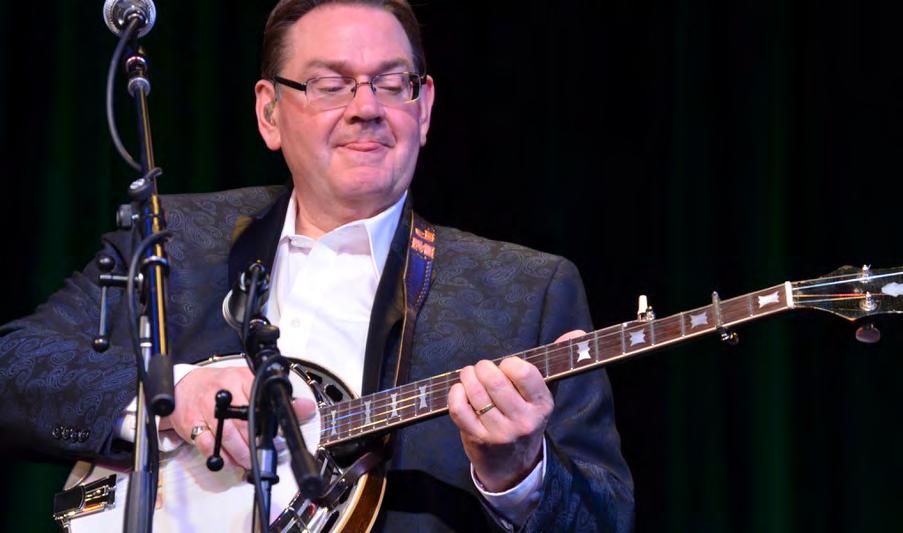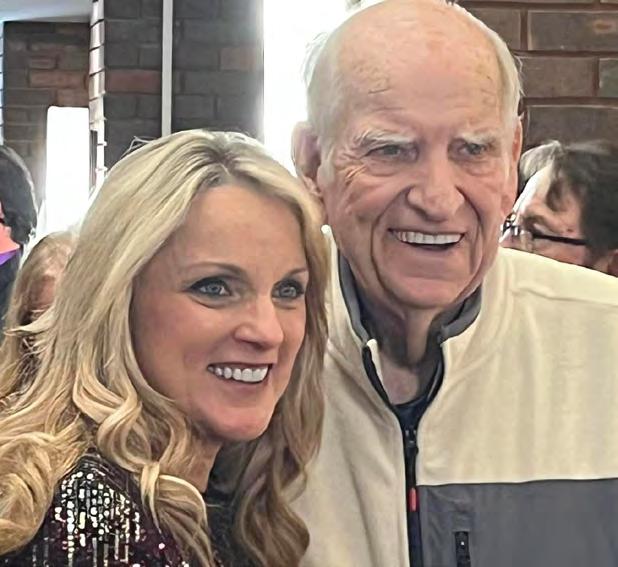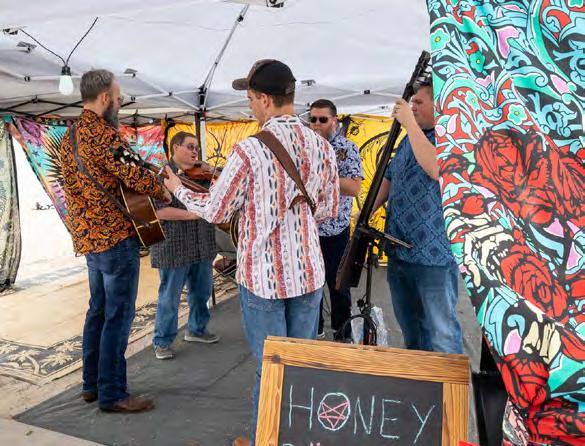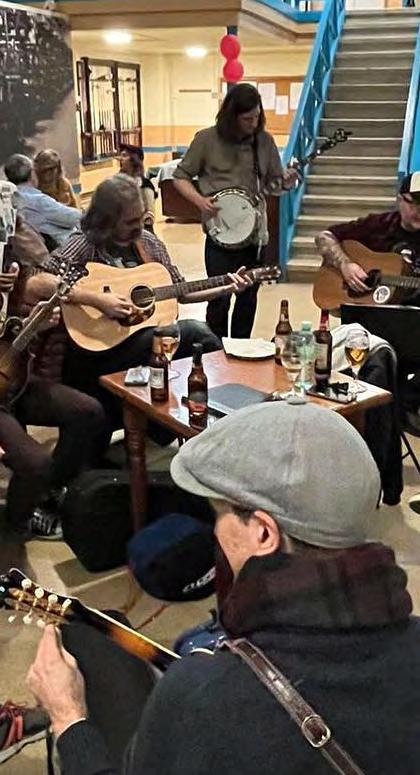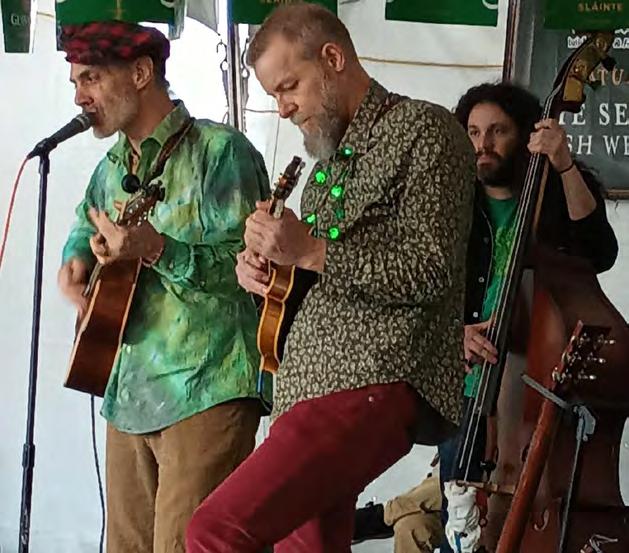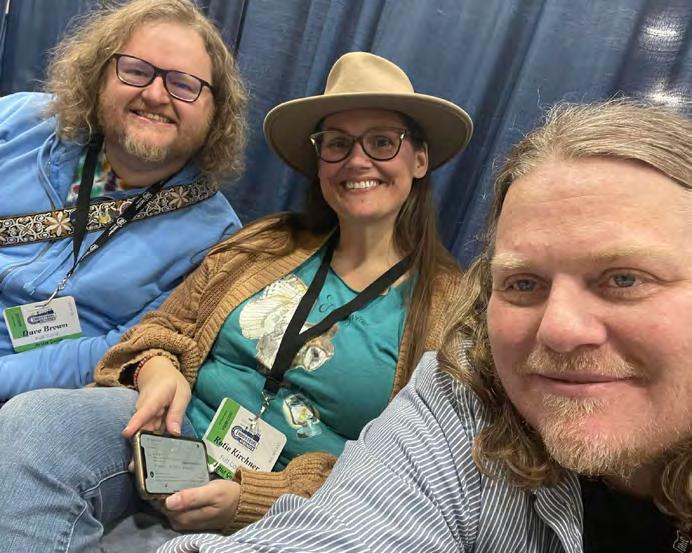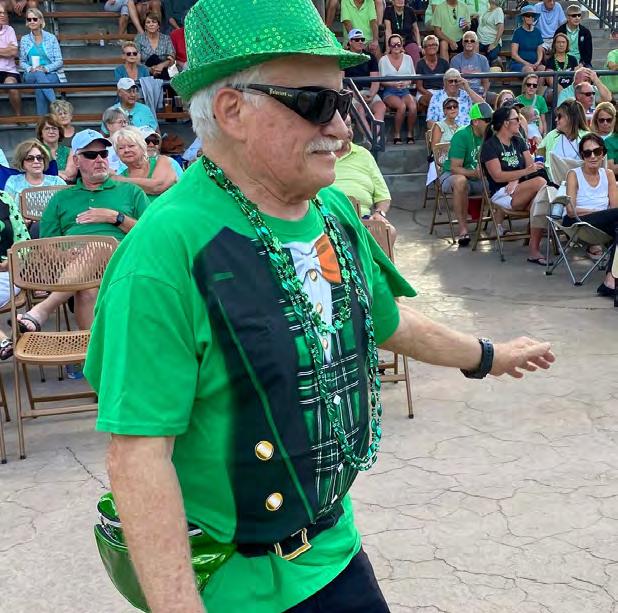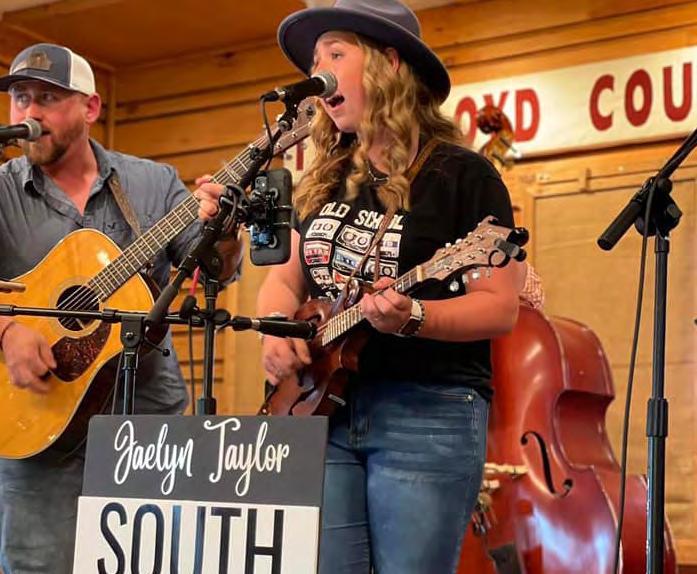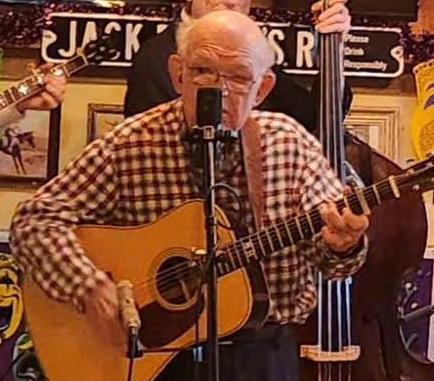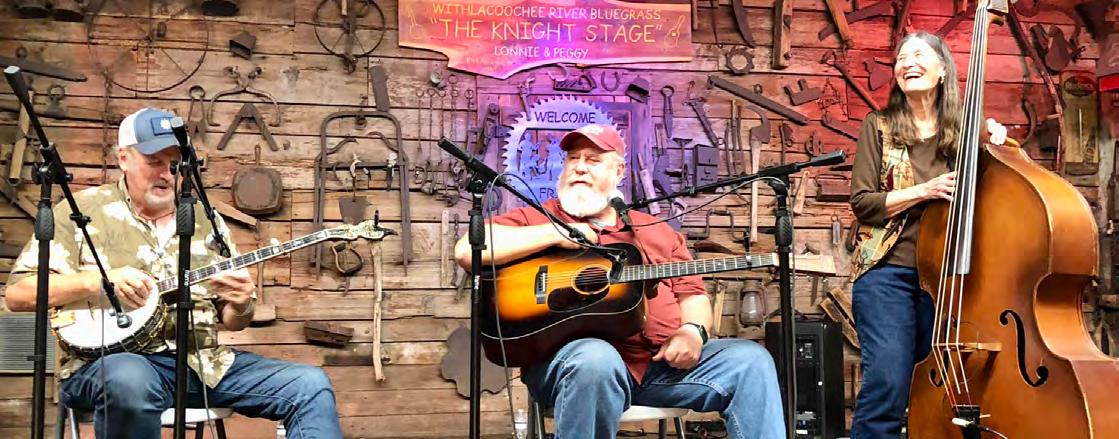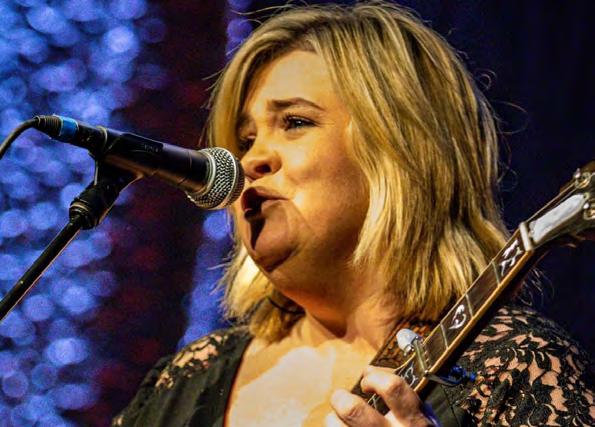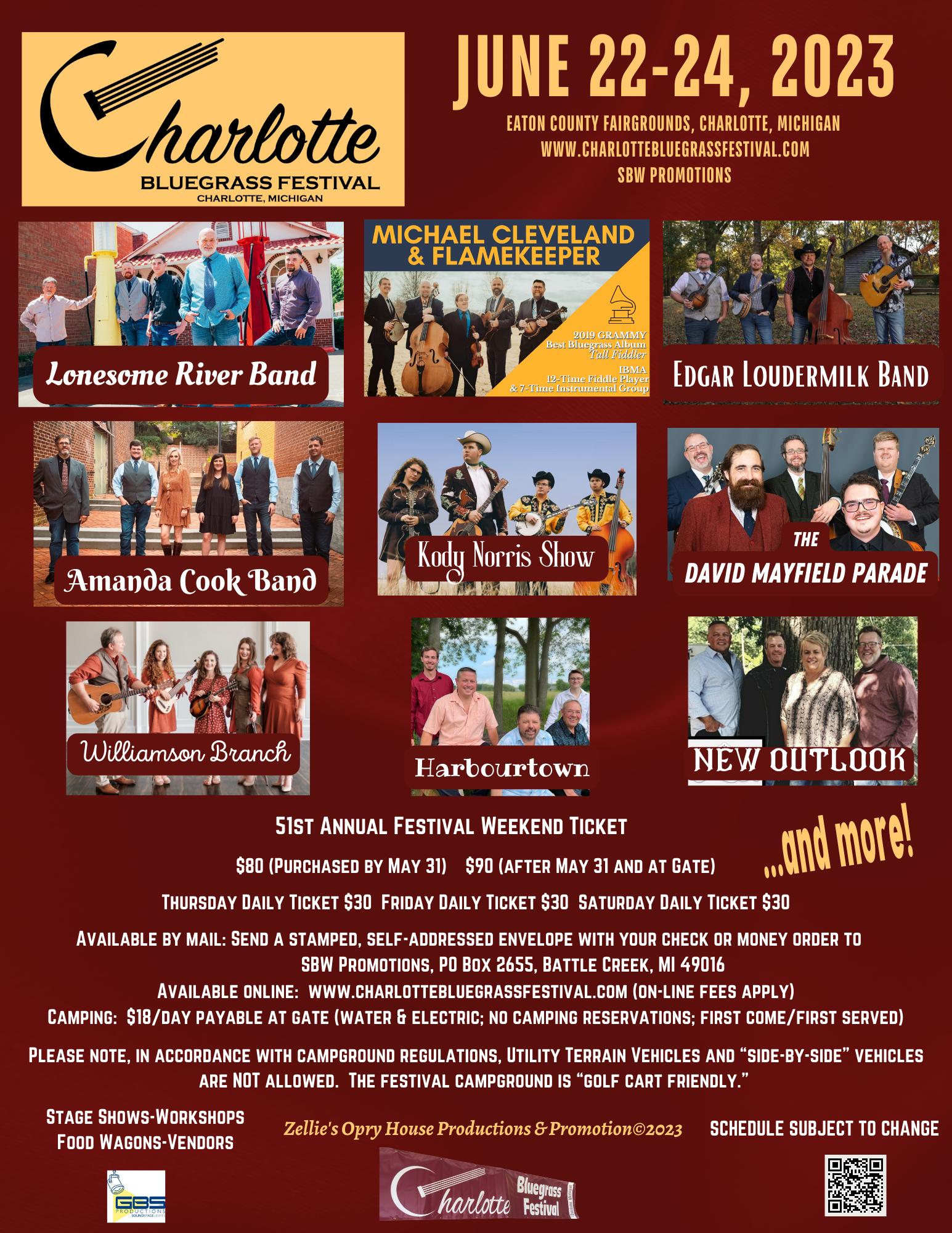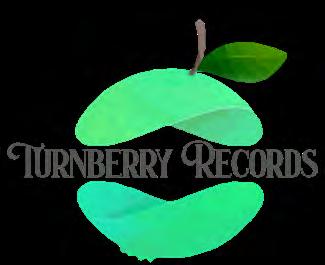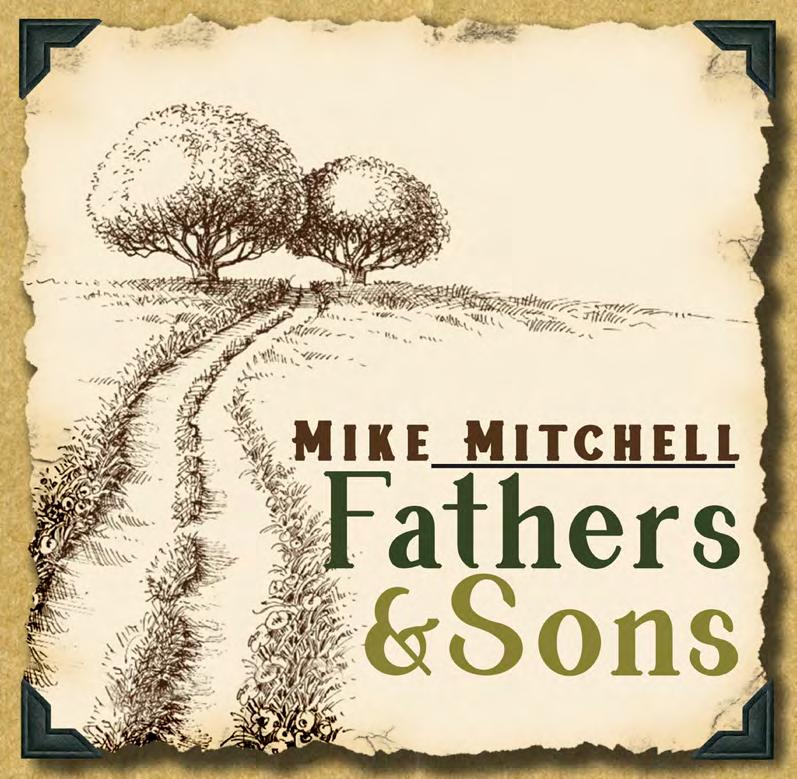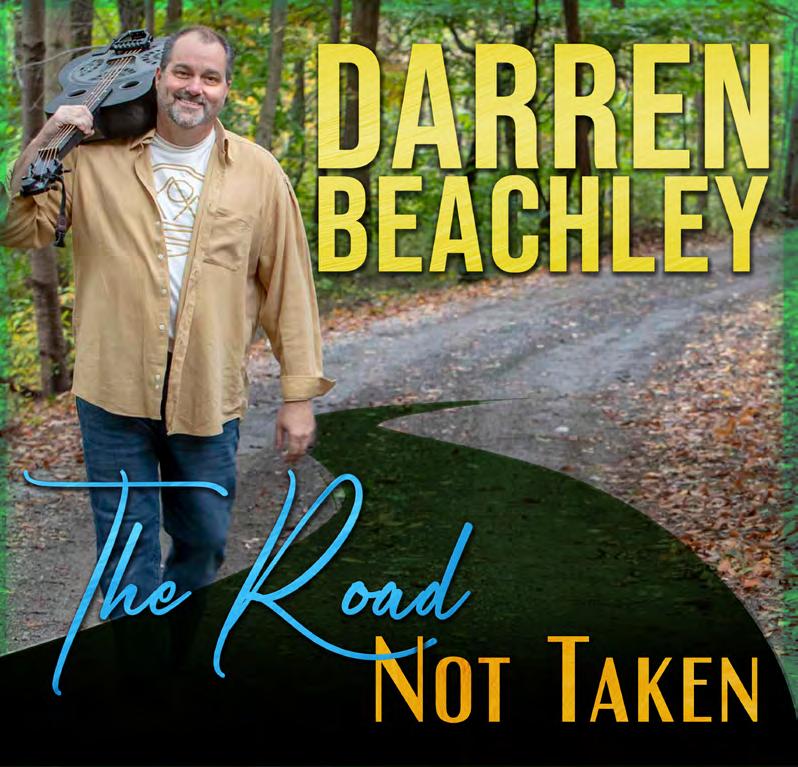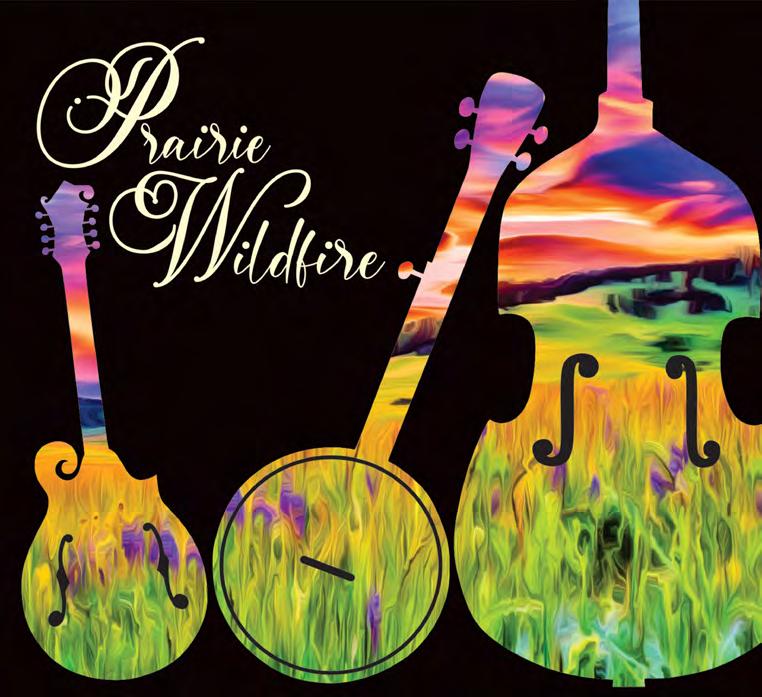




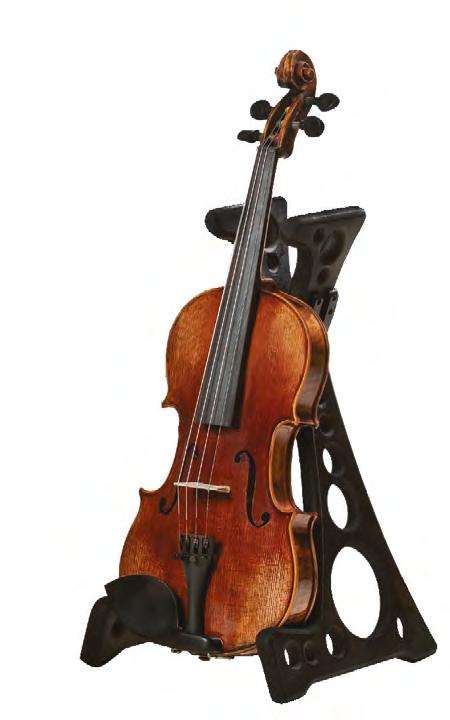






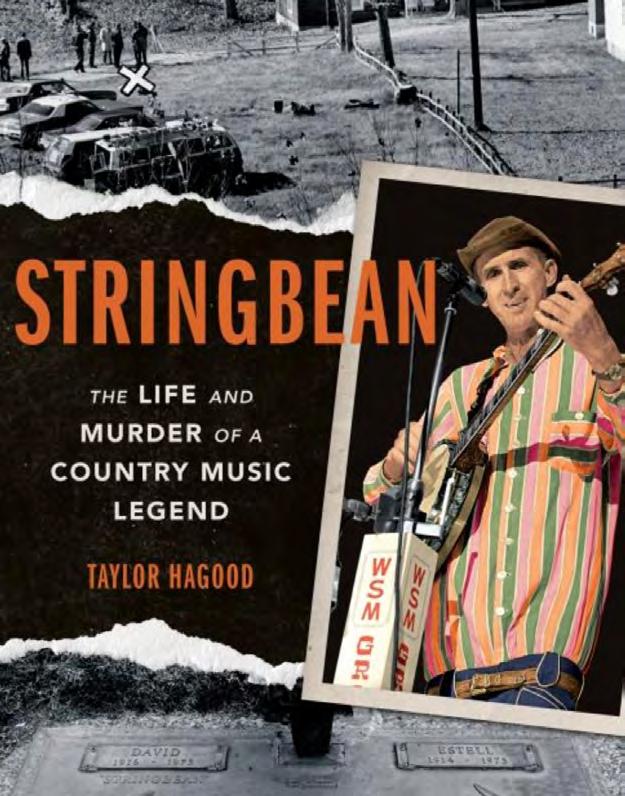

CONTENT
























The Bluegrass Standard is a life-long dream of Keith Barnacastle, who grew up in Meridian, Mississippi. For three years, Keith brought the Suits, Boots and Bluegrass Festival to Meridian. Now, with the Bluegrass Standard, Keith’s enthusiasm for the music, and his vision of its future, reaches a nationwide audience every month! Keith@TheBluegrassStandard.com


Richelle Putnam is a Mississippi Arts Commission (MAC) Teaching Artist/Roster Artist (Literary), a Mississippi Humanities Speaker, and a 2014 MAC Literary Arts Fellowship recipient. Her non-fiction books include Lauderdale County, Mississippi; a Brief History, Legendary Locals of Meridian, Mississippi and Mississippi and the Great Depression. Richelle@TheBluegrassStandard.com

Rebekah Speer has nearly twenty years in the music industry in Nashville, TN. She creates a unique “look” for every issue of The Bluegrass Standard, and enjoys learning about each artist. In addition to her creative work with The Bluegrass Standard, Rebekah also provides graphic design and technical support to a variety of clients.
Susan traveled with a mixed ensemble at Trevecca Nazarene college as PR for the college. From there she moved on to working at Sony Music Nashville for 17 years in several compacities then transitioning on to the Nashville Songwritrers Association International (NSAI) where she was Sponsorship Director. The next step of her musical journey was to open her own business where she secured sponsorships for various events or companies in which the IBMA /World of Bluegrass was one of her clients.
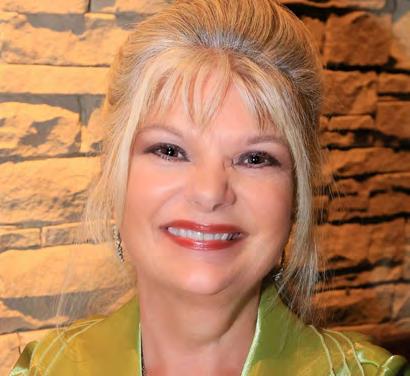
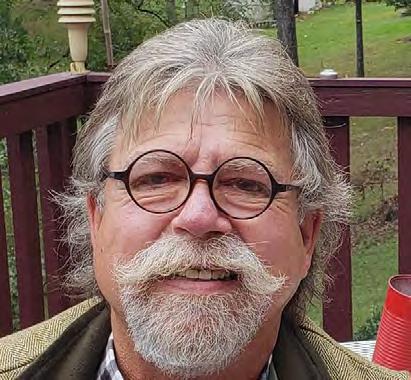

One day I will send Rebekah the teeny tiny paragraph that she keeps askng for.


Susan Marquez is a freelance writer based in Madison, Mississippi and a Mississippi Arts Commission Roster Artist. After a 20+ year career in advertising and marketing, she began a professional writing career in 2001. Since that time she has written over 2000 articles which have been published in magazines, newspapers, business journals, trade publications.

Kara Martinez Bachman is a nonfiction author, book and magazine editor, and freelance writer. A former staff entertainment reporter, columnist and community news editor for the New Orleans Times-Picayune, her music and culture reporting has also appeared on a freelance basis in dozens of regional, national and international publications.
Candace Nelson is a marketing professional living in Charleston, West Virginia. She is the author of the book “The West Virginia Pepperoni Roll.” In her free time, Nelson travels and blogs about Appalachian food culture at CandaceLately.com. Find her on Twitter at @Candace07 or email CandaceRNelson@gmail.com.

Karleen Lewis, Director of Marketing and Communications for Visit Boulder, knows better than anyone what makes Boulder, Colorado, special.
“I love that you can feel Boulder’s kind and curious heart through every interaction you have here,” Lewis explained. “From cultivating sustainable living habits to a community that rallies around one another, Boulder has a special feeling all its own.”
Part of that “special feeling” includes a thriving bluegrass scene. From Hot Rize to Leftover Salmon, local musicians have put forth music born amongst the rugged peaks. It’s a more western reflection of the music that finds its base influences in Appalachia’s original rocky bluegrass terrain. There’s just something about mountains that pairs with the music.
“In Boulder, a love for folk, Americana, and bluegrass music has long been in the water, with the natural setting and laidback vibes providing a muse for musicians,” Lewis said, adding that several regular outdoor music series allow audiences to hear tunes “carried on the mountain breeze,
often with a view of the Flatirons.”
When pressed to describe the dynamic between landscape and music, Lewis said a musicologist might be able to provide a more learned answer, but she gave a stab at it as someone who lives in the region and is deeply immersed in local culture.
“In Boulder, the surrounding beauty in the forests, foothills, and mountains represents a kind of everyday escape – a way to connect with something deeper inside you through the freedom of nature,” she said. “That seems to be similar to the feeling of freedom many musicians and audiences connect with in bluegrass, folk, and Americana music.”
“In addition, there may be a connection between Boulder’s historical demographics and some of these musical movements,” she explained. “Between 1960 and 1975, Boulder’s population more than doubled, with the majority under the age of 24. Not all of them were hippies, but hippie culture thrived in Boulder, and college students outspoken about political issues transformed Boulder’s social landscape. For
many people, Boulder still conjures up images of VWs, long hair and peace signs.”
This thriving and progressive roots music scene has made Boulder an appropriate “bluegrass destination.”
First, there are the festivals. Lewis said the Charles Sawtelle Memorial Mountain Jam usually happens in late July in Gold Hill.
“The Charles Sawtelle Memorial Mountain Jam, aka ‘The Charles,’ is named for the beloved Hot Rize guitarist, Charles Sawtelle, who helped start the event in 1989,” Lewis explained.
“After his passing in 1999, the event was renamed in his memory. Celebrating its 35th anniversary, The Charles is a familyfriendly mini-festival of al fresco bluegrass and Americana music aimed at music fans who enjoy the clear mountain air and dazzling acoustic music in a spectacular outdoor setting.”
The Bluebird Music Festival happens on April 29 and 30, 2023.
“The Bluebird Music Festival is a two-day music event held in
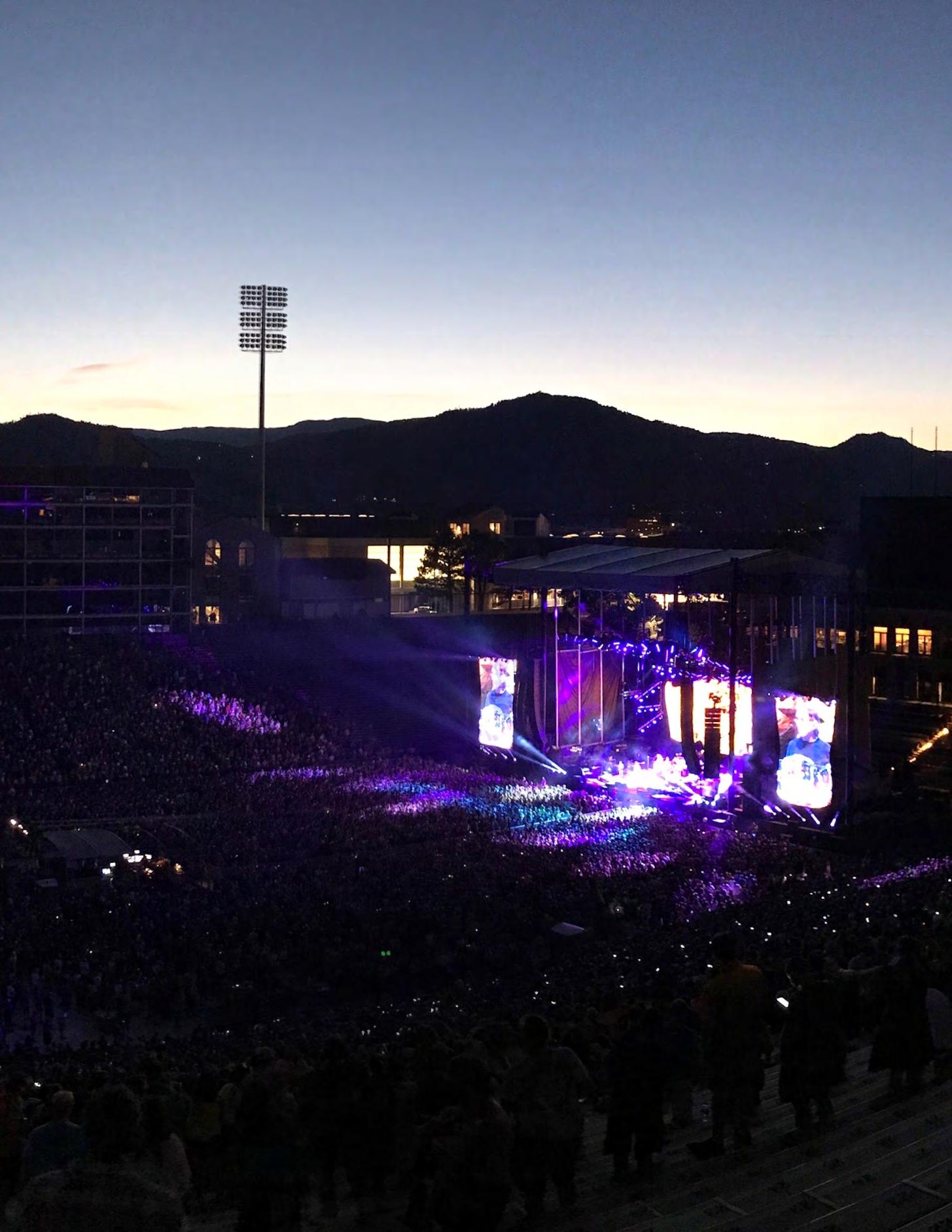
Macky Auditorium on CU
Boulder’s campus,” Lewis said. “There are over ten performances throughout the day with something for all age groups, featuring an impressive mix of artists and a unique ‘Stories and Strings’ format. The ticket proceeds go to The Future Arts Foundation, a nonprofit organization that works to provide Colorado schools with instruments and art supplies.”
Music fans who want to take in something different might also consider a visit during the annual Boulder Bach Festival, which celebrates the music of J.S. Bach, and Colorado MahlerFest, another classical music happening inspired by composer Gustav Mahler.
Then, there’s Colorado Chautauqua, around which Lewis said it makes sense to structure a visit to Boulder. It hosts yearround concerts across genres.
“Chautauqua is worth a trip on its own,” she said. “Its auditorium brings visitors and the community together to celebrate shared cultural events.
Listening to a concert at the auditorium is a unique experience – it’s centuries old, built with an open architecture that produces
acoustics like no other.”
She added that it is a vital, engrained piece of Boulder and its community. “Chautauqua has a deep history, starting in the 1800s, and now is one of the only Chautauquas left in the country.”
In addition to the Chautauqua, Lewis suggests that visitors look into live music at venues such as Boulder Theater, Fox Theatre, Mackey at CU, Boco Cider, The Velvet Elk Lounge, Dairy Arts Center, or The Bandshell.

A more comprehensive experience might include adding a visit to the 63rd St Farm.
“This urban farm hosts live music outside during the summertime, where you can bring your picnic or enjoy food from a local food truck,” Lewis said. “Located only a few minutes from downtown Boulder, it is focused on sustainable agriculture that connects with the community through a symbiotic relationship with animals, plants, and people. This farm has educational workshops, tours, and volunteering available to the public throughout the year.”
Every Thursday, The
Rayback hosts live, local music.
“This venue has food trucks, drinks, event spaces, and a backyard that’s dog friendly,” Lewis said. “Outside of music, they also host trivia nights, community events, and stand-up comedy every Sunday.”
For those who want to get to the spirit of the Boulder bluegrass scene, there’s eTown Hall.
“Operated by bluegrass musician Nick Forster, eTown hall is an events production company,” Lewis said. “They produce nationally syndicated radio broadcast/podcast shows in front of a live audience. eTown is home to the Hippy Bluegrass Church, an event with community sing-alongs paired with poetry and storytelling with bluegrass musicians.” Lewis said her city is appealing year-round, but fall seems to be her personal favorite season.
“One of the best things about Boulder is how there are things to do all year long, so it’s always a great time to visit,” she said. “Our fall season usually has the most pleasant temperatures, the 60s to 70s, with a ton of events.
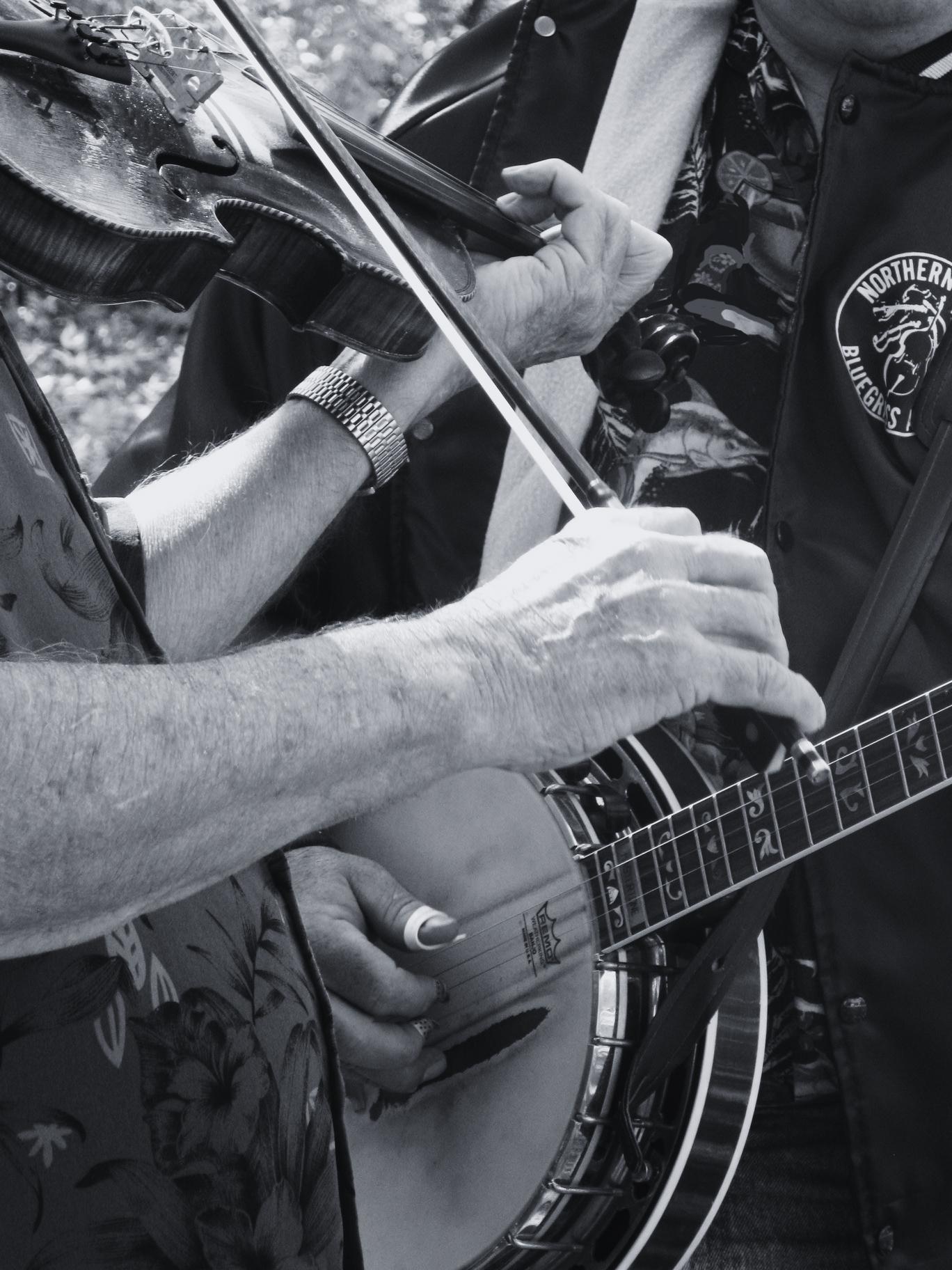
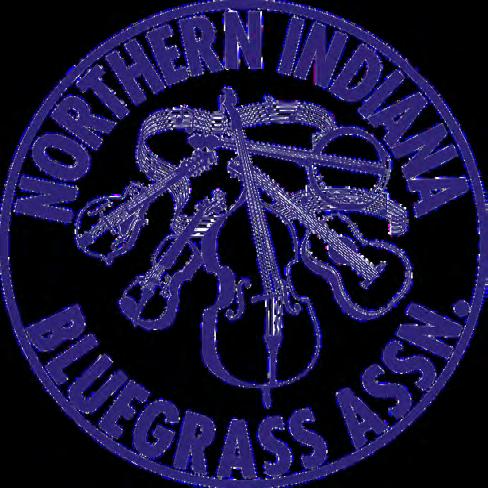


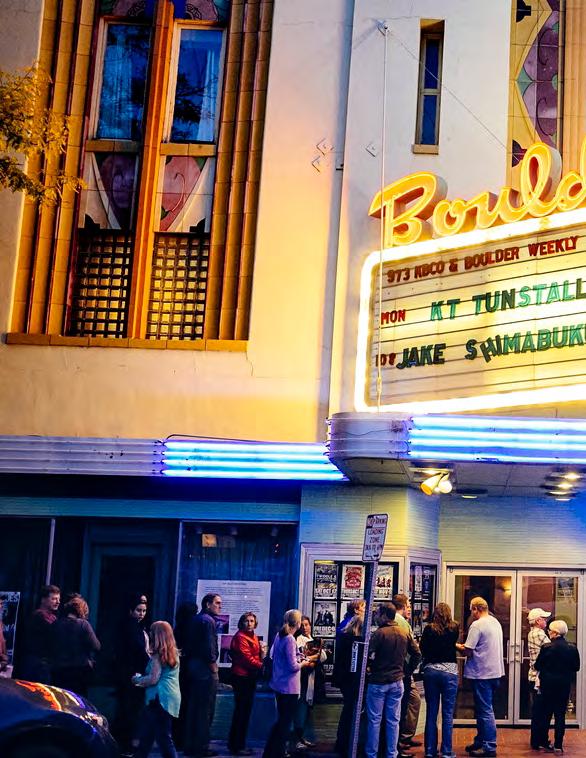

There are plenty of opportunities to see fall colors on foot, on a scenic drive, or visit one of Boulder’s 20 farms with visitor experiences. Plus, it’s CU football season!”
To sum it up, Lewis feels Boulder has something for everybody.
“When it’s time to gather round with friends for a great meal, Boulder has an enormous – and delicious – selection of restaurants and craft breweries for a city its size,” Lewis said. “At day’s end, you can stay in a cottage or adventure lodge tucked into the foothills or in a historic boutique hotel downtown – whatever floats your boat!”

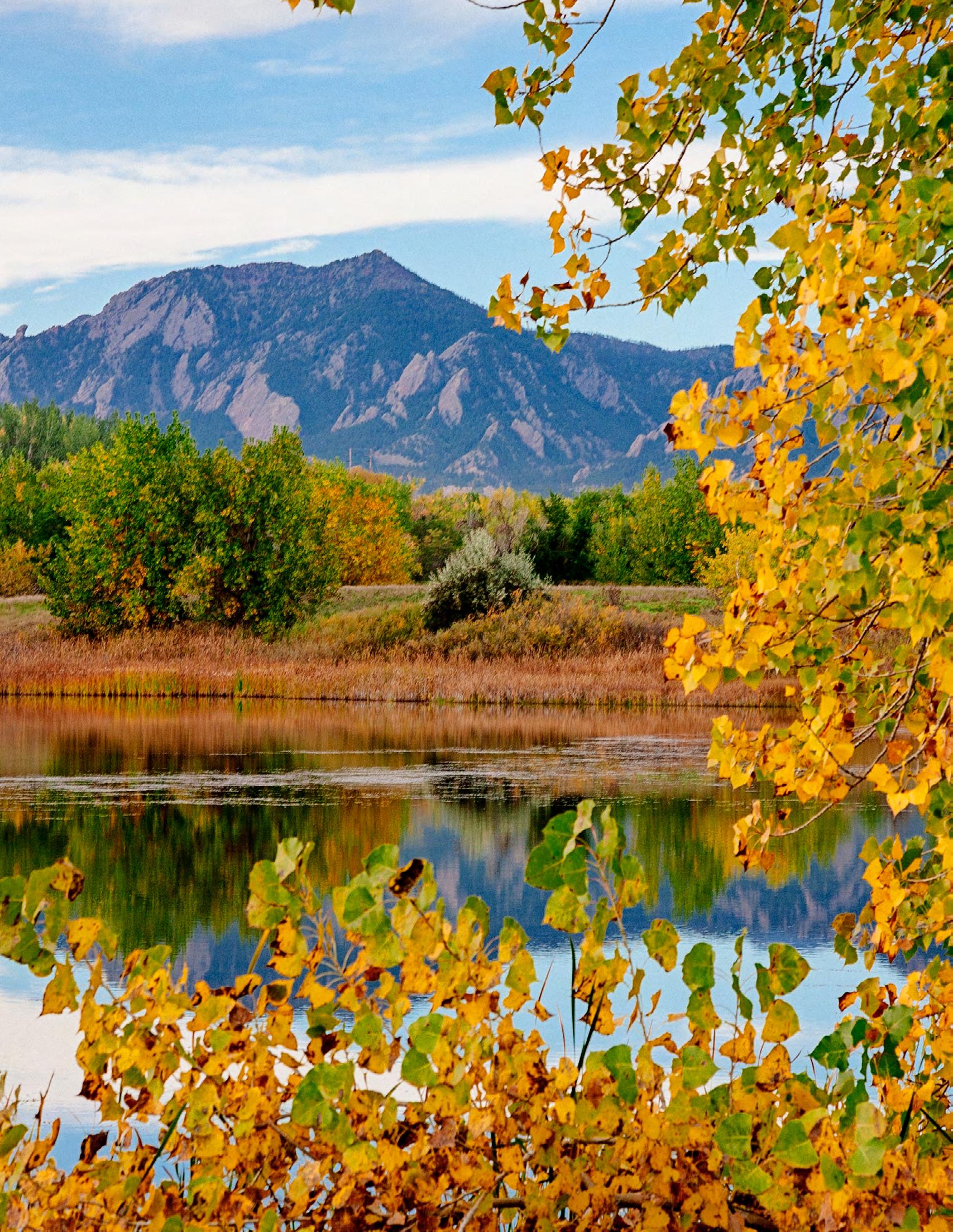


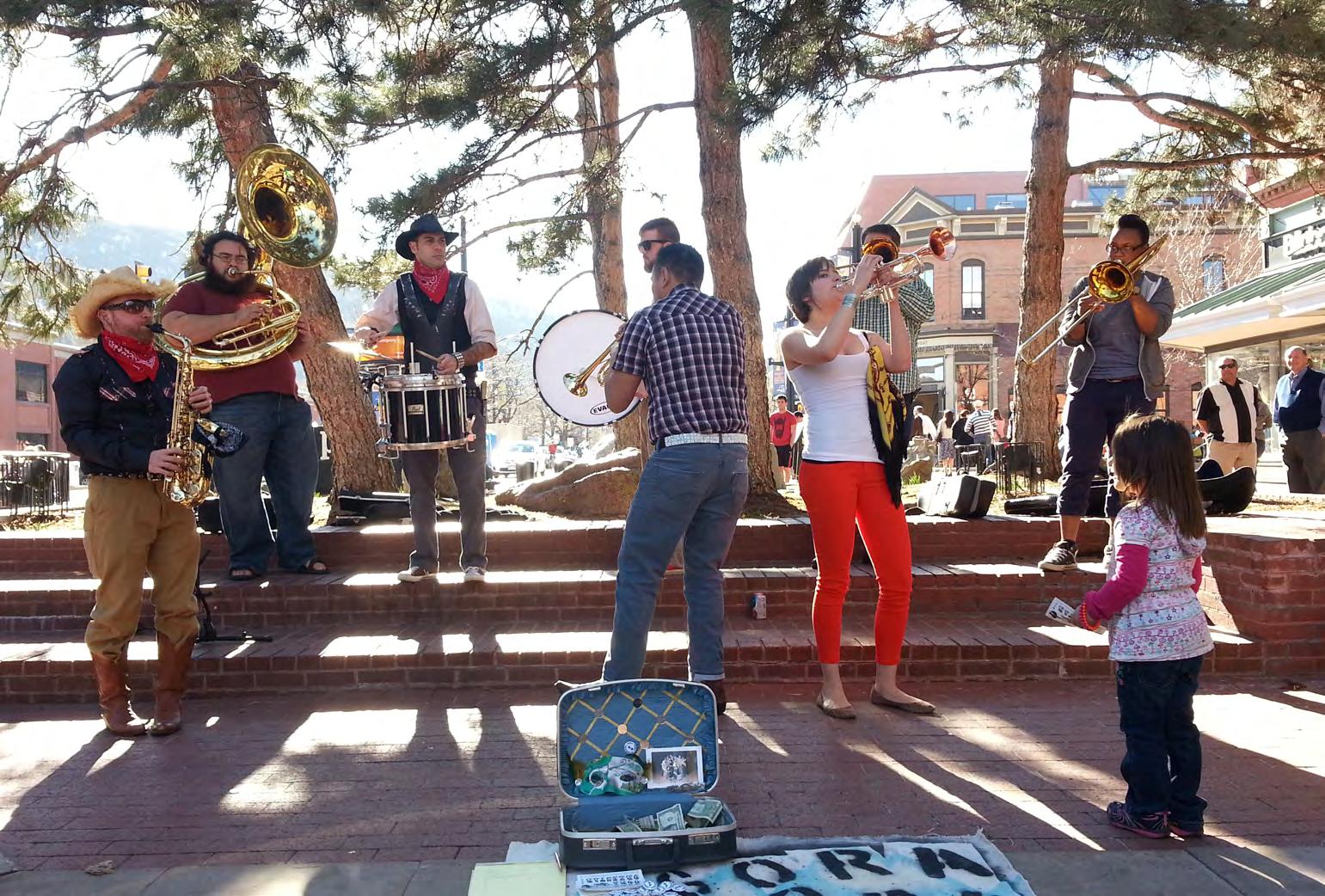


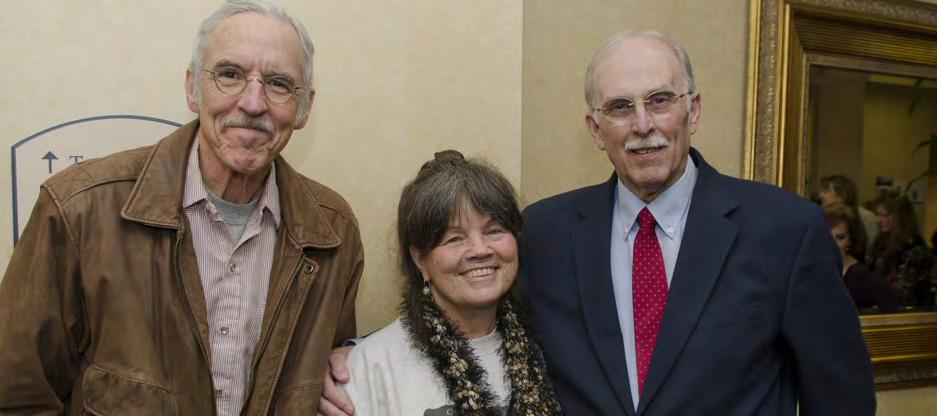
Bluegrass music has been fostered in the D.C. area for decades and has a well-earned reputation for being a bluegrass hotbed. When people migrated from the Appalachian region to Washington, D.C., in search of work, they brought their instruments and musical heritage. “That is true especially of the 1970s and 1980s,” says Matt Slocum. “And the same is true today. There are so many performance venues here that it would be easy for musicians to get every night of the week.” Matt moved to D.C. in the early 1980s from New England and has always found the area supportive of bluegrass music. Matt serves as the president of the D.C. Bluegrass Union, an all-volunteer 501(c)3 nonprofit organization founded in 2002. The organization serves Washington, D.C., and surrounding areas in Virginia, West Virginia, Maryland, Pennsylvania, and Delaware. “Our mission is to help inform, educate, connect, and broaden our active community of not only bluegrass performers but the fans, the venues, and the promoters,” says Matt. Organization founder Kip Martin focused on pushing bluegrass music by enhancing the local bluegrass community through free events. Randy Barrett continued the mission through contests and concerts.
Matt says the organization holds jams for area musicians and performing opportunities for local bands. “There is never a lack of an audience,” he says. “There is a military installation in Alexandria. There have always been roadhouses between the base and the City that supported live music. There’s just something special about bluegrass music, and we want to help promote it all we can to bring smiles to faces, get toes tapping, and hopefully fill the pockets of the musicians with some jingle. We have been blessed with many phenomenal local musicians. Some are celebrated, some not so much, but we appreciate them all.”
It’s important to Matt and the other Board members of the D.C. Bluegrass Union to get out into the community and provide more value to their members. “We do all we can to help bands promote themselves. The calendar page on our website is available to all our members to post performances. The good thing about D.C. is that it is a yearround city.” One thing the organization does is throw a monthly birthday party. “We pick a couple of musicians and honor them with a birthday celebration and jam.”
The D.C. Bluegrass Union also presents a series of events and contests each year where they support original compositions and songs. “We average around 125 entries a year,” says Matt. “Many of those have gone on to have their work celebrated on a much larger stage.” The Mike Auldridge Instrumental Competition Contest honors the life of The Seldom Scene co-founder and legendary Dobro guitar player. The Hazel Dickens Songwriting Contest celebrates the West Virginia native who connected with local musicians when she moved to Baltimore as a young woman to find factory work. She performed throughout the region and was recognized for her unique mountain singing style and memorable lyrics. Cash awards totaling $1,700 are presented to the top three selections in the two contests.
Over the years, the D.C. Bluegrass Union has presented nine festivals on their own, but Matt says instead of putting on a festival now, they promote area festivals as much as possible. “There are so many good festivals around, and we are a small volunteerbased organization.” Matt says they all love to jam, and in 2022 they worked with local musicians to help coordinate more than fifty jams representing close to 1,500 hours
of music opportunities in and around the D.C. area. They have two recurring events, one in D.C. and one in Maryland, providing fans and musicians a place to gather for an evening of good bluegrass music. “It’s not unusual to see a member of the Bluegrass Hall of Fame at one of our jams,” says Matt.
Like similar organizations, D.C. Bluegrass Union relies on members and donors to help with its mission. The membership isn’t limited to musicians. Anyone who enjoys bluegrass music is welcome to join. “Bluegrass is a social phenomenon,” says Matt. “It appeals to folks on all rungs of the economic ladder. It has a unifying effect which is a good thing, especially in Washington D.C.”
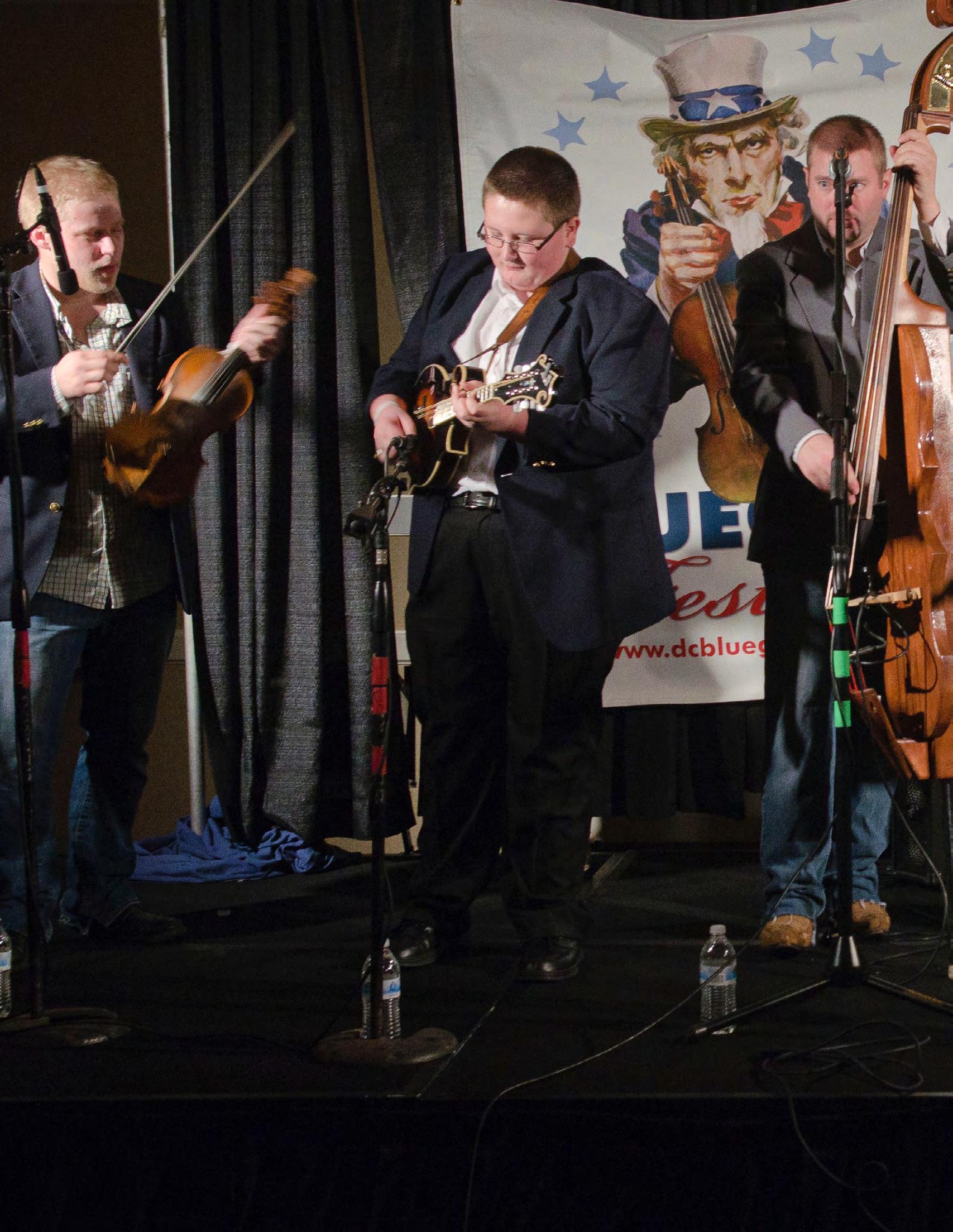

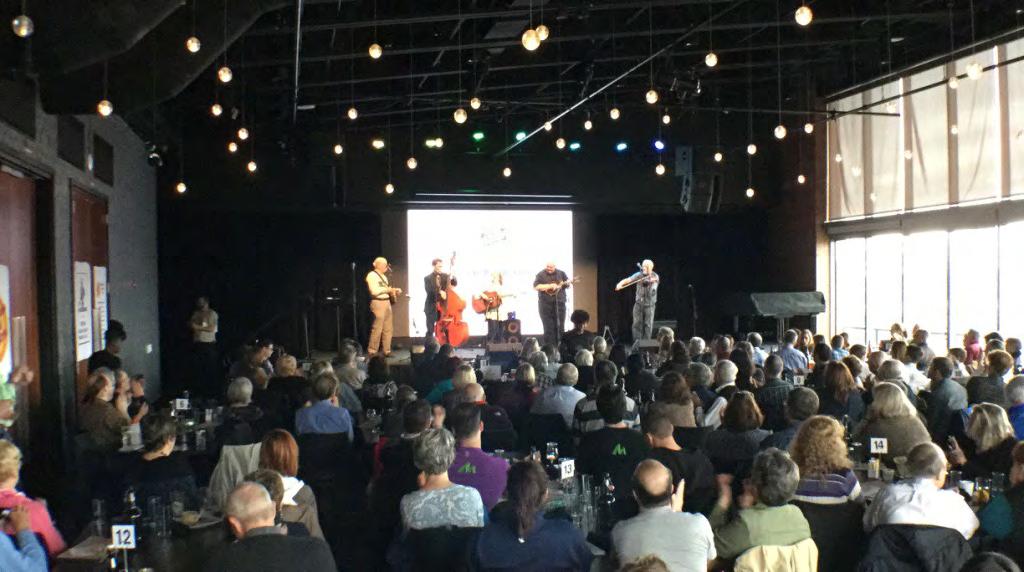

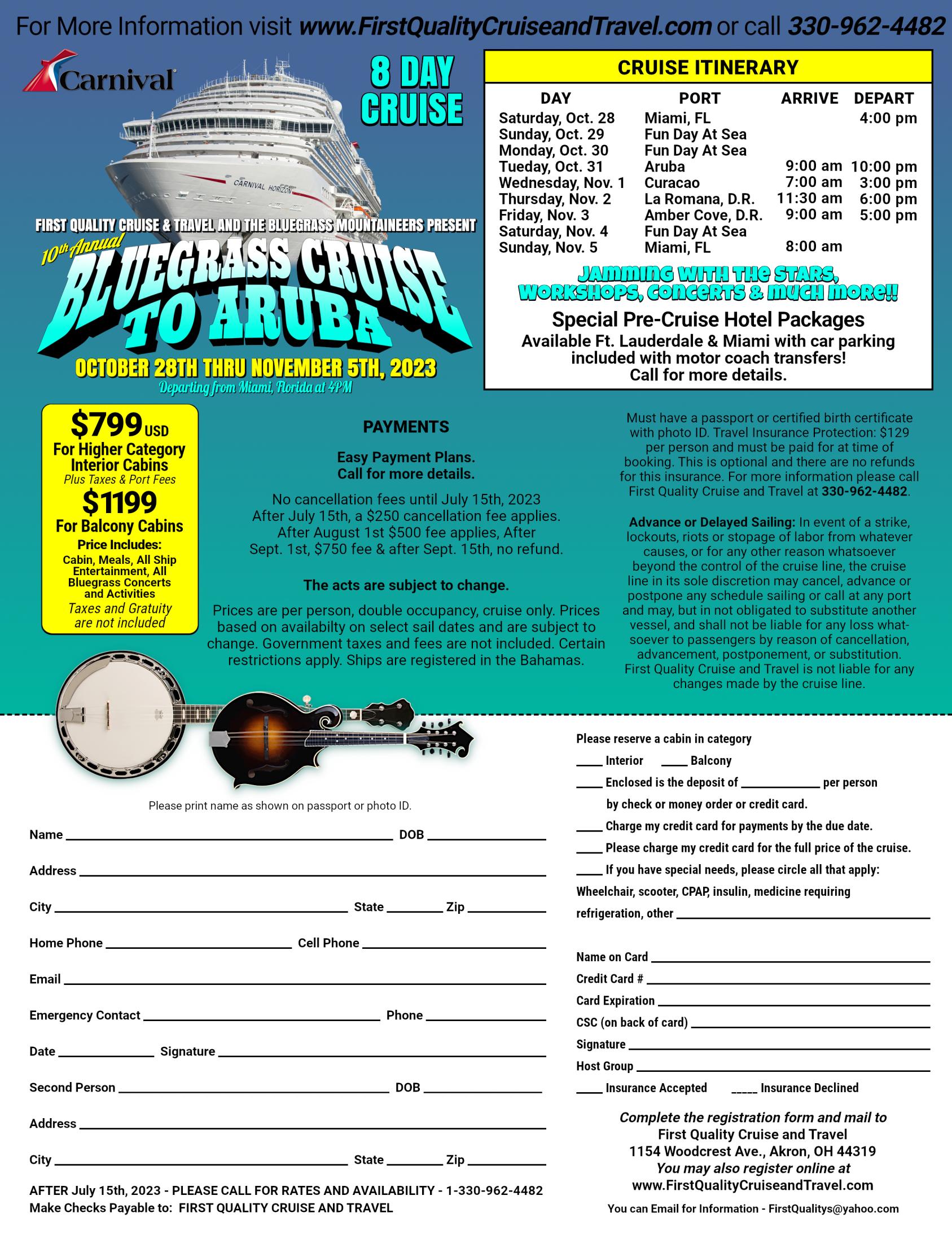
Bass player for The Sweet Lillies, Julie Gussaroff, knows well how important it is to support bluegrass. She and her bandmates host a weekly open session, the Wednesday bluegrass pick, at Beyond the Mountain Brewing in Boulder, Colorado.

“We absolutely love our jam at Beyond the Mountain Brewing,” Gussaroff said. “It brings together such a wonderful group of musicians and friends each week to share songs, laughs, and stories. Beyond The Mountain Brewing is a constant supporter of live music and has continually made us all feel loved and welcome at the brewery.”
It’s the inclusiveness that spreads that love. It’s an affection not just for the music but for the musicians themselves, who might range from professional to beginner. Anyone who often participates in open jams or pick sessions can tell you: it’s precisely that openness and acceptance of warmly welcoming all people that makes these sessions so fun.
“Our pick is open to everyone of all ages and skill sets,” explained Chuck Hixon, Beyond the Mountain Brewing owner. “Just show up with your instrument, and you get to play. We have no cap on the number of participants. We’ve had picks range from as small as four or five people to as many as 30. The main rule is to just have fun.”
Although the brewery features all sorts of music, Hixon said it does offer “a heavy bluegrass presence.”
“Boulder has an amazing bluegrass community, with many influential bands such as Leftover Salmon, Hot Rize, and Yonder Mountain String Band cutting their teeth here,” Hixon explained. “So we thought it important to embrace the history of the music here as well as trying to add our little footnote to its legacy.”
For Hixon, his products are a match for the sounds heard at the Wednesday jams.
“Bluegrass music goes great with beer in many ways,” he said. “Mainly, bluegrass music is very up-tempo and energetic, so it’s perfectly complimented by a good brew. We at the brew also like to think the way bluegrass features improvisation influences our approach to recipe creation. Sometimes you just have to go with what you feel.”
Those recipes produce products that sometimes even have bluegrass performers at
their core.
“One thing that I believe really makes us stand out and reflects our love of the local music community is our artist collaboration series,” Hixon said. “Once or twice a year, we get one of our favorite local bands to come in and make a beer. They pick the style, the name, and a local charity that receives $1 from every pint sold. Most recently, we worked with Big Richard, who is currently making waves in the bluegrass scene.”
“While we brew all sorts of different beers, we like to think that we excel at brewing very clean beers that are true to classic styles,” Hixon explained. “But that doesn’t mean we won’t make something really ‘out there’ from time to time. Currently, we have a beer made with Reese’s Puffs cereal on tap.”
In addition to the Wednesday pick, the brewery also features weekend performances from various genres.

“We try to focus mainly on bluegrass, rock, Americana, and ‘jam’ bands for our weekly entertainment,” he said, “although sometimes we do have a one-off from another genre.”
Hixon doesn’t include bluegrass to enhance and reflect the local scene; he does it because he is a fan.

“I grew up as mainly a classic rock kid until shortly after college, a friend took me to Floyd Fest in Virginia,” he recalled. “That was a very eye-opening weekend for me, getting to experience so much bluegrass music for the first time. Since then, I’ve become a huge fan of the genre and am a familiar face at all the bluegrass festivals in Colorado.”
“While I’m not a talented musician,” he added, “I do like to play a little mandolin



and bass at home. Maybe one day I’ll actually work up the nerve to join in the bluegrass pick myself.”
In summary, Hixon wanted to thank all the people who participate in making Wednesday nights so entertaining and community-spirited.
“We are very lucky to have such great people join in our bluegrass pick every week,” Hixon said. “The familiar faces and sense of community the pick has built really warms my heart.”

“I am also very thankful that The Sweet Lillies continue to host it,” he added. “It wouldn’t be half as good without them. They have been great friends of the brewery over the years and were actually the first band we ever collaborated on a beer with.”

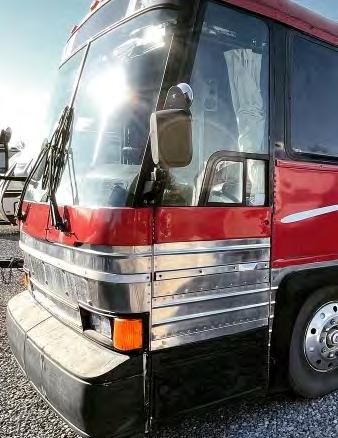
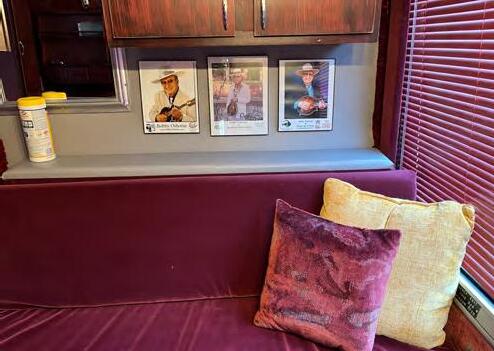

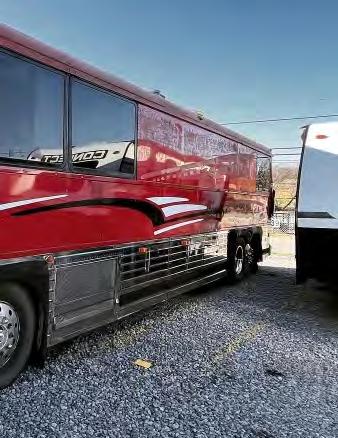
The bluegrass world has a way of bringing people together. And bluegrass musicians are some of the most accessible people around. At least, that’s what C.J. Lewandowski found when he befriended one of his musical idols, the legendary Bobby Osborne.
“I’m originally from Missouri,” says C.J. “I first met Bobby in 2004 when my best friend’s grandfather took us to see him at the Cross Country Trail Ride Bluegrass Festival in Eminence, Missouri. His brother, Sonny, was still playing with him. It’s a big-budget festival that has been going on since the 1960s, and the Osbornes always played there.” C.J. was learning how to play the mandolin then, and he recalls that the Osbornes arrived in a big Eagle bus. “I knew the director, and he took me backstage, where I casually chatted with Bobby. It was so exciting for me.”
The festival shut down in 2006, the year Bobby bought an MCI bus and started “The Rocky Top X-press.” C.J. saw Bobby perform in other places. “He was a huge musical idle of mine. I first got to know him around 2011 when I went down to take lessons from him. We hit it off, and I was delighted.”
C.J. attended the Kentucky School of Bluegrass and Traditional Music in Hyden, Missouri, but after a few months, he realized it wasn’t for him. “I wanted to play.” The big changing point for C.J. was when he bought a 1927 Gibson F-5 Fern mandolin in 2019. “Bobby played a 1926 Gibson, and he was interested in seeing mine. We’ve been friends ever since.” Now 91 years old, C.J. says Bobby loves to text on his iPhone and is very knowledgeable on the computer. “He is amazing. We text or talk frequently. I told Bobby that the first time I
saw him, he had a glitter strap. He said he had it at home somewhere, and if he could find it, he would send it to me. I came in from being on the road, and a package from Bobby was waiting for me. He sent me the strap, and now it is on display in the Bluegrass Hall of Fame.”
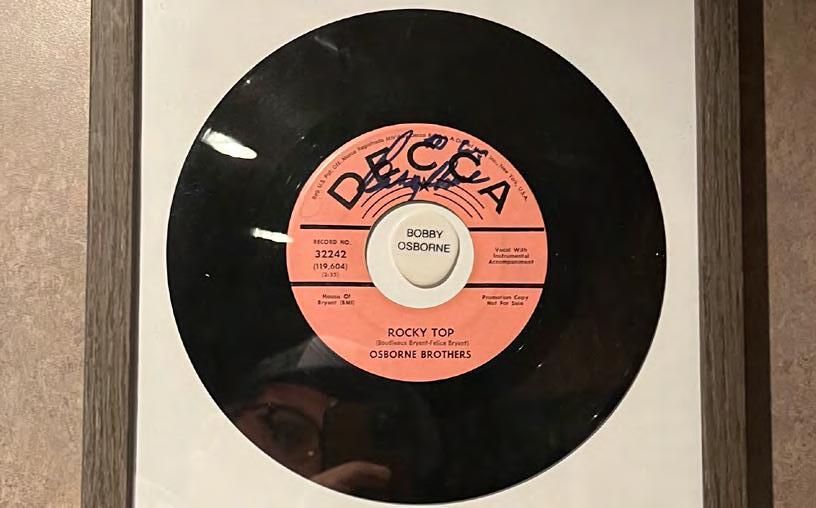
After Covid, Bobby was anxious about getting out in public. “I know that he is very competitive, and he wanted to get back out there,” says C.J. “He was concerned that if he didn’t, he would become obsolete.” At about the same time, C.J. was visiting Bobby, and they started talking about Bobby’s bus. “He said he and his wife were tired of paying insurance on a bus they didn’t use anymore, and he gave it to me,” recalls C.J. “I was blown away. I offered to pay for it, but Bobby wouldn’t have it. I told him he could use it anytime he wanted.”

The 1989 MCI forty-foot bus started life as a passenger coach. Marty Raybon bought the bus and started to convert it, then Tim Dillmon took the bus on trade. “Tim had a bus leasing company in Nashville called Music City Coach. The bus Bobby was supposed to take was locked up for repairs, and he saw an old red bus sitting on the lot. He said he’d take it. Joe Madden revamped the front end and built a ‘star suite’ in the back, a custom room built just for Bobby.” C.J. named the bus Ruby. “It needs new tires and a few other things, but overall I can’t believe how good it drives. I recently stayed in it at SPBGMA, which was very comfortable.”
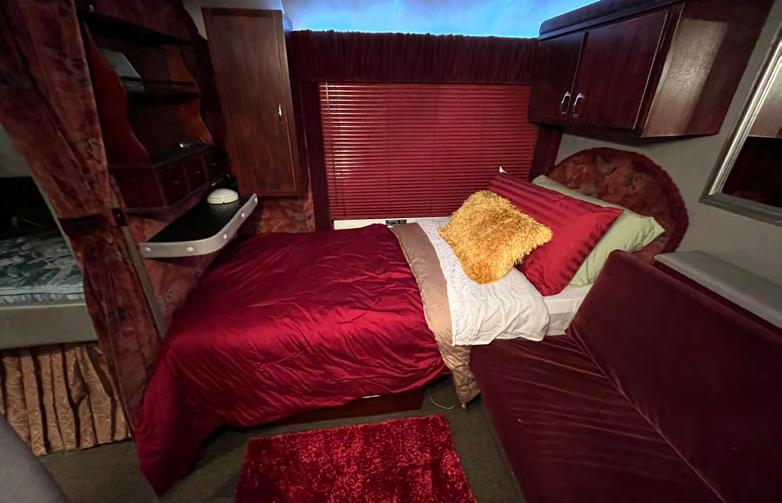
In the meantime, C.J. spoke with Bobby Osborne, Jr. (known as Boj) and asked if all was OK with Bobby. “He said that Bobby needed to be out playing.” Bobby began playing at the American Legion in Nashville, which has become a hipster venue, which has been an outstanding experience for him. “I spent a week in Palm Springs at Keith Barnacastle’s home, and we talked about doing a solo project. I told Keith I wanted Bobby to play on a song on my next album. I believe now it’s going to be more than that.”
Turnberry Records announced recently that “an album is currently in the works between bluegrass legend Bobby Osborne and C.J. Lewandowski, founding member and mandolin player of the Grammy-nominated bluegrass band, The Po’ Ramblin’ Boys.” The original idea was to record a few songs with Bobby to sprinkle throughout other albums over the next few years. The talk soon evolved into a full-on collaborative album. “We called Bobby, who was immediately on board,” says C.J. “We are super excited about it. Quite a few songs have been picked out for the project. The Po’ Ramblin’ Boys will be involved, as will Winn, Robby, and Boj Osborne. We are also talking to several bluegrass legends to come on board.”
If all goes as planned, a new album will be out, and a new generation of Bobby Osborne fans will be able to hear his talent. “He is still as relevant as ever,” says C.J. “I want to give people an opportunity to hear him well into the future.”




Branson, Missouri has become a hot vacation destination, and bluegrass music has played a prominent role. “The sounds of the hills are very much rooted in bluegrass,” says Lisa Rau, director of public relations and publicity for Silver Dollar City Attractions/Herschend Family Entertainment, one of the main attractions in Branson. “Here in the hills, people gathered for picking parties on porches. That went well into the 1950s, and we recreate that here at Silver Dollar City to give visitors an authentic hills experience.” Today the City of Branson, nestled within the heart of the Ozark Hills, has a population of fewer than 11,000 people, yet it has millions of visitors annually.

The area attracted tourists early on due to its easily accessible cave system. Lisa explains that Jack Herschend and his brother, Pete, used to give cave tours to tourists in the late 1950s. “To keep folks entertained while they stood in line, they hired a man named Fiddlin’ Jake to play.” There is no doubt that was the beginning of Branson becoming a musical mecca. “Jack Herschend married the daughter of an early cave guy,” says Lisa. “She played the dulcimer, and there was a certain allure to it that appealed to Jack.”
The Herschend brothers developed their entertainment empire, including theme parks and other attractions across the United States. Probably the most well-known is Silver Dollar City in Branson, built on Marvel Cave. “Silver Dollar City opened May 1, 1960,” says Lisa. “The musicians are what keeps the tradition of bluegrass alive. We have Main Street and a square in Silver Dollar City where visitors can find crafts from the region, a general store, street theatre, and lots of music, primarily the bluegrass music of the Ozark Hills. As a matter of fact, Silver Dollar City has never been without bluegrass music, including picking parties.”
One of the features of Silver Dollar City is an 1800s homestead. “We feature our Homestead Pickers during three to four shows a day. It’s not unusual for guests to bring their own instruments, spoons, and even their voices to play along with our musicians.”
While Silver Dollar City is a great place to hear live music, it isn’t the only place in Branson where live music draws crowds. Branson’s entertainment district, known as “The

Strip,” features dozens of theatres where live bands and performers present both traditional and contemporary bluegrass. “We have embraced the traditional because that’s our roots,” says Lisa. “But we also need to stay relevant. I’ve found that the largely traditional groups play on weeknights, but on the weekend, the more contemporary artists play. It’s a nice introduction to bluegrass for some, and for others, it shows how bluegrass has evolved.”
There are other things to do when not listening to live music in Branson. Tours are still given in Marvel Cave, and many enjoy outdoor activities at Table Rock State Park and Moonshine Beach. For a fun evening out, there’s nothing like the experience at Dolly Parton’s Stampede Theatre, where 32 magnificent horses perform in a 35,000foot arena, complete with dinner. And anyone who knows anything about Dolly will know she loves butterflies, which is why she would probably love visiting the Butterfly Palace in Branson, a magical place to remember forever, featuring 1,000 live exotic butterflies along with tropical plants and birds. Other Branson hotspots include

the Titanic Museum, with a full-size model of the ill-fated ship, and the Celebrity Car Museum, where over one hundred iconic vehicles from television shows and movies are on display.
One of the biggest events in Branson is the annual Bluegrass and BBQ Festival held on the grounds of Silver Dollar City. The festival kicks off this year on May 4 and runs through May 29. This year’s festival features some of the most well-known names in bluegrass, including Missouri native Rhonda
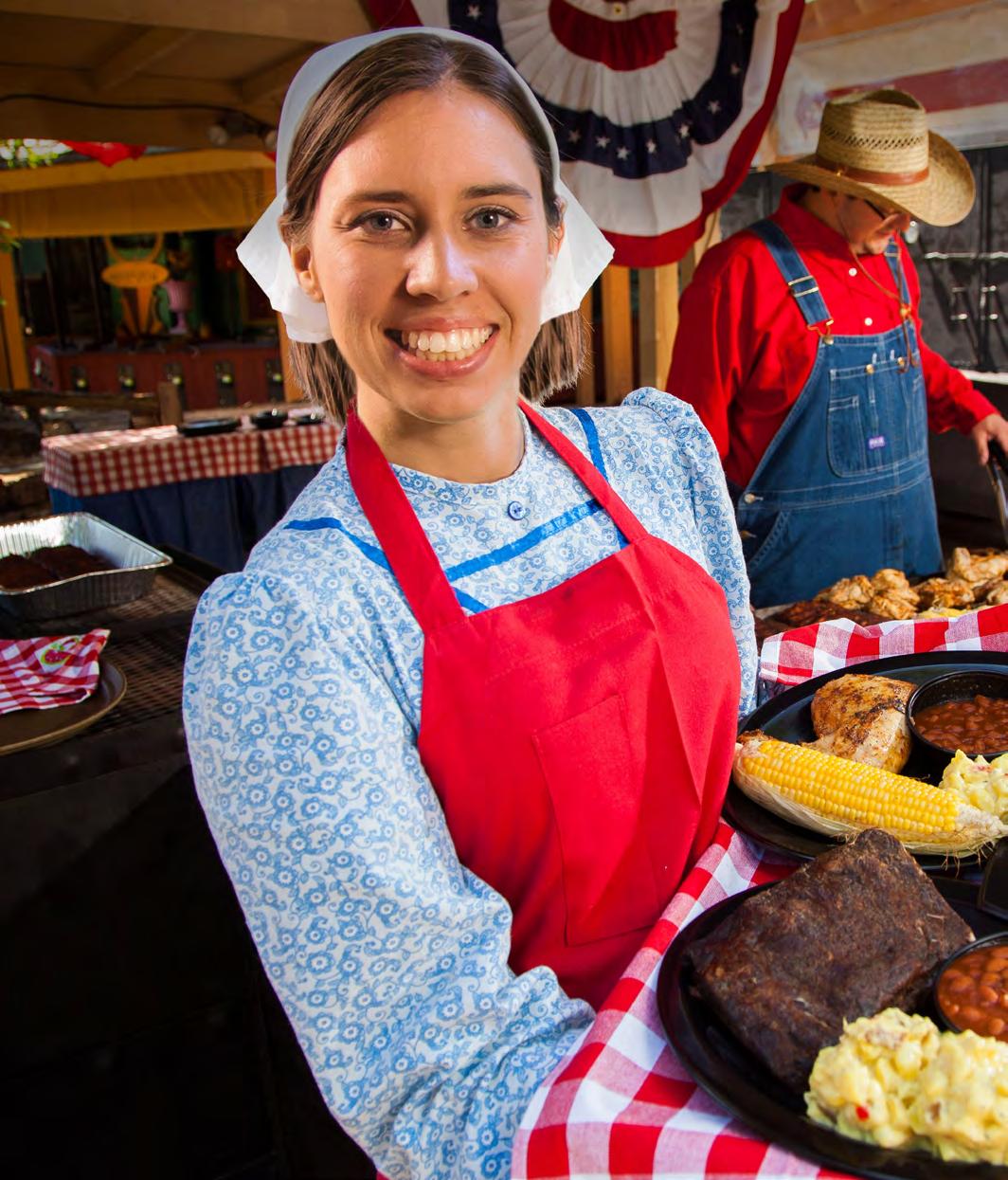
Vincent, Joe Mullins and The Radio Ramblers, The Special Consensus, Po’ Ramblin’ Boys, and many more. During the festival, visitors can enjoy barbequed chicken, brisket, pulled pork, and slow-cooked ribs. While people tend to come for the music, they stay for the barbecue.
One of the festival highlights is the Youth in Bluegrass Band Contest, Silver Dollar City’s tradition going back twenty-five years, providing young musicians from across the country the chance to perform and compete for top honors. Held in conjunction with
KSMU-FM, the winners receive cash prizes. “We have seen some strong bluegrass recording artists come out of this contest,” says Lisa.
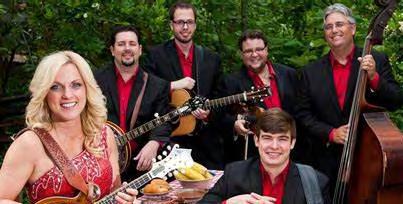
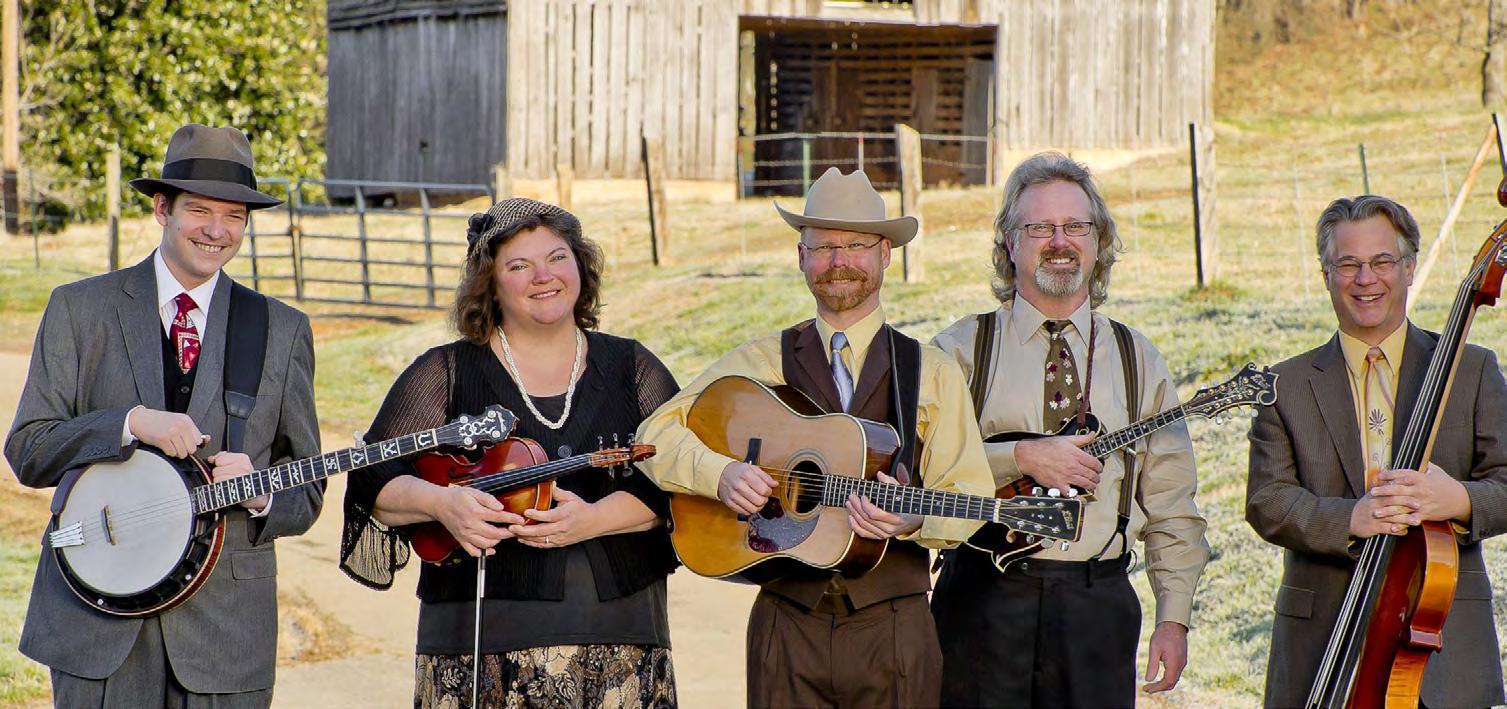
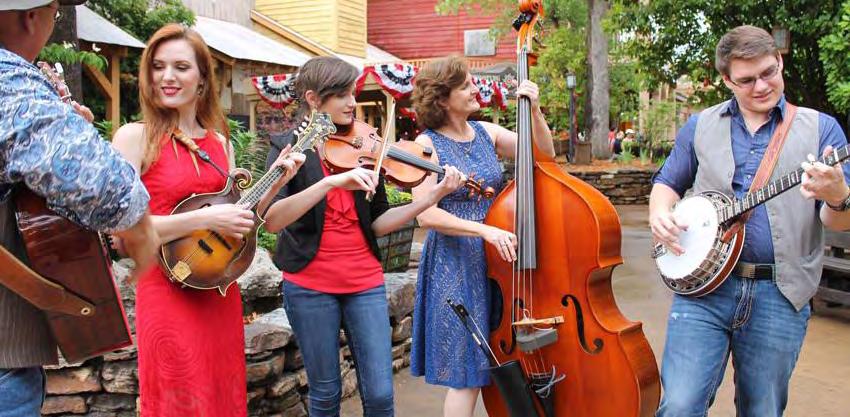
For more information on Branson and its attractions, visit the Branson/Lakes Area Convention and Visitors Bureau website, www.explorebranson.com.



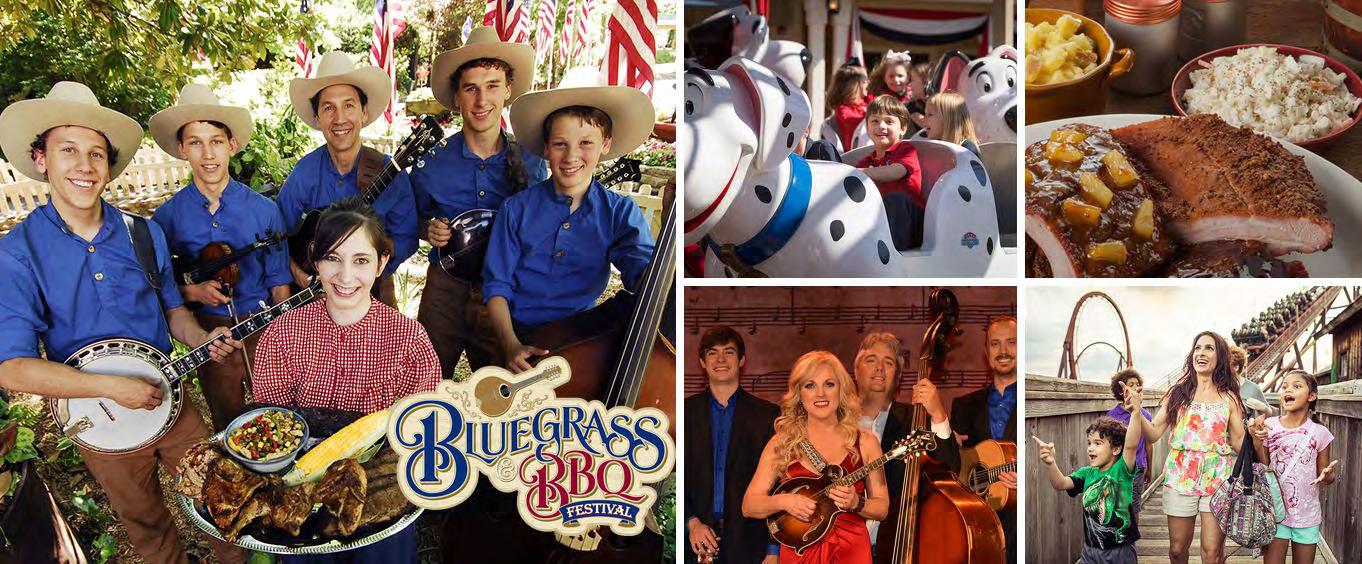
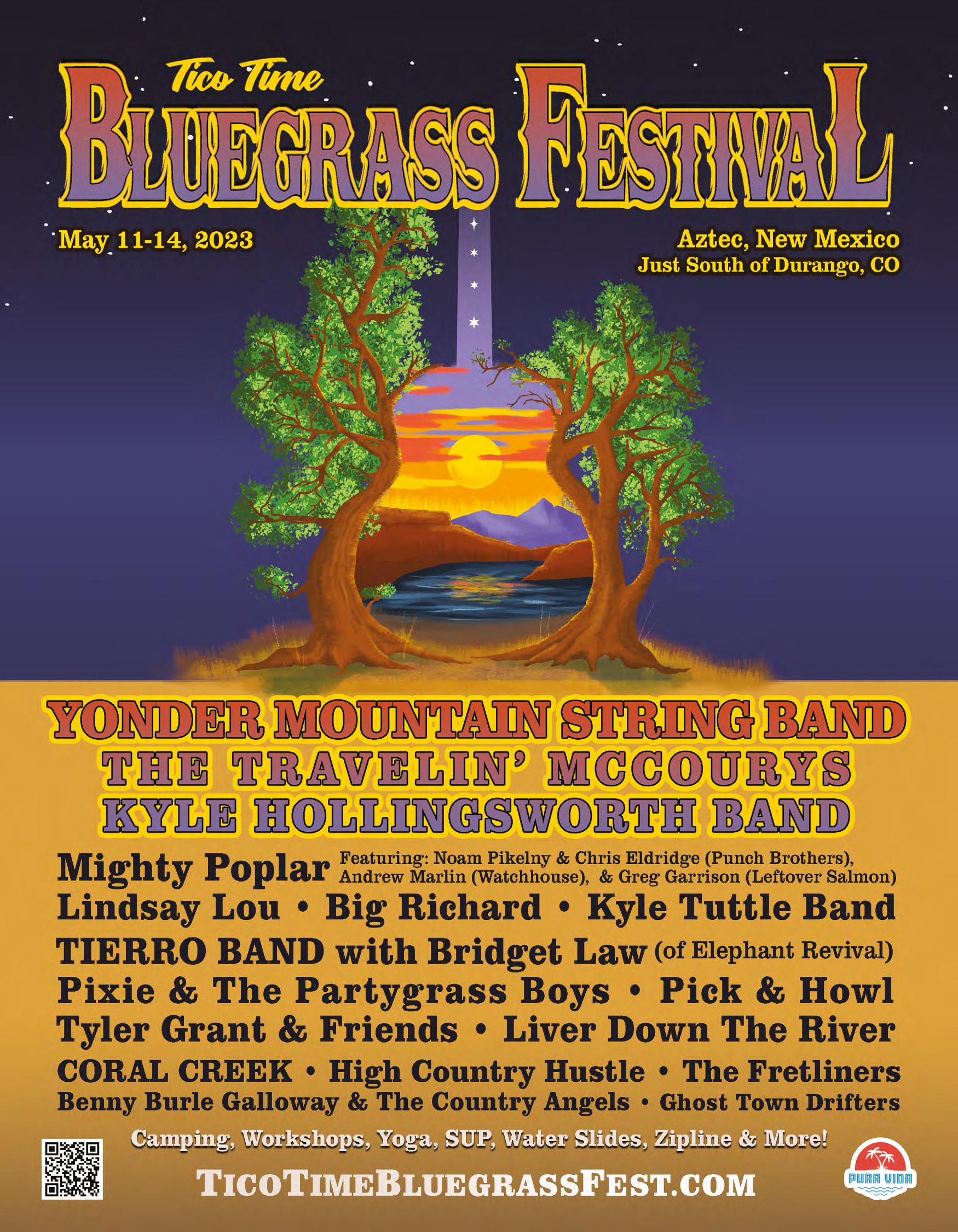
The JackTown Ramblers aren’t limited to bluegrass. Yeah, they pick out tradition like the best of ’em, but they also deliver moments that sway well off the beaten path.
“One of the things that make our band a little different is that we mix in some swing, some gypsy jazz, some David Grisman kind of stuff,” explained JackTown Ramblers lead vocalist and mandolin player Gabriel Wiseman.
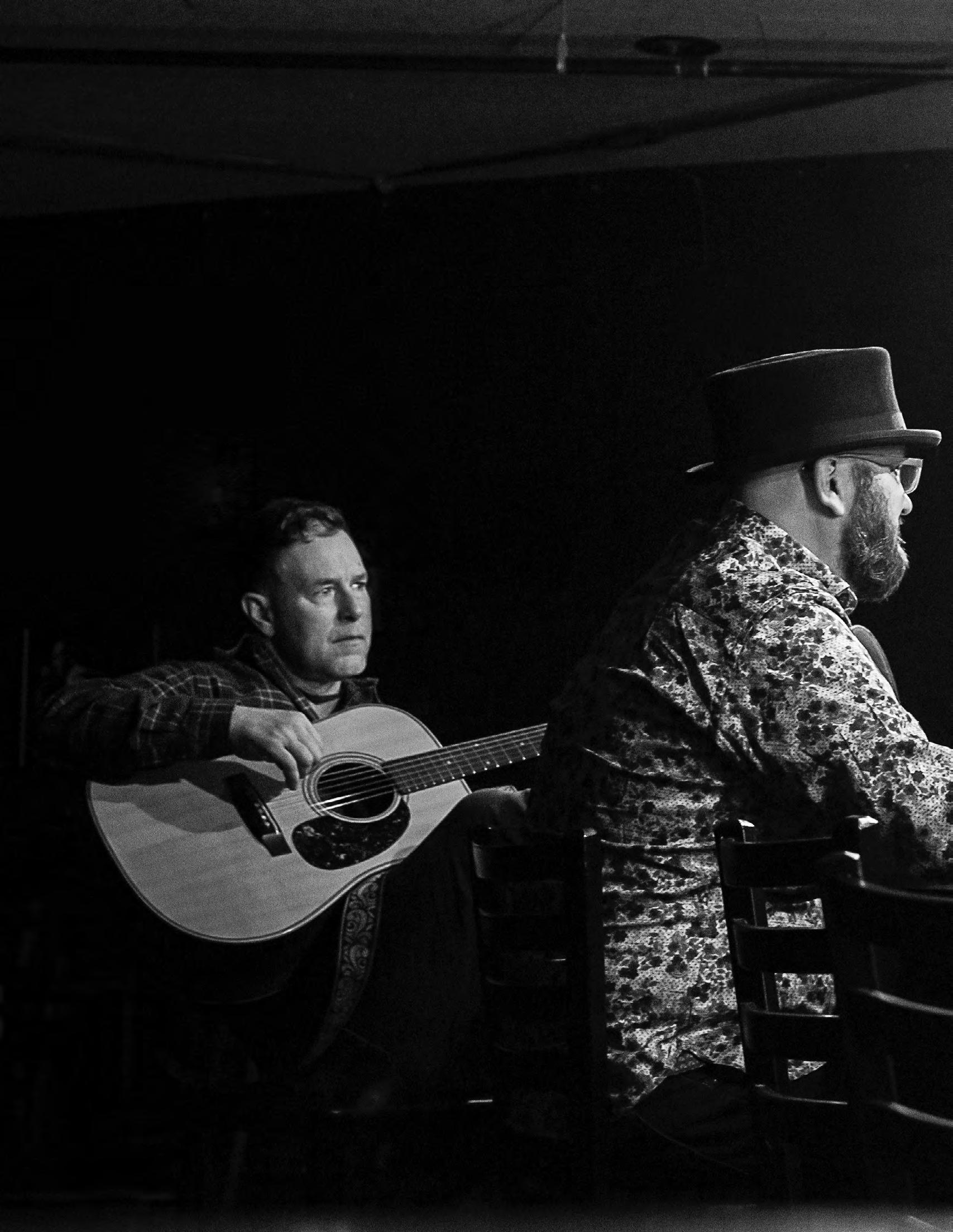
That flexibility displayed in the release of Live in Asheville showcases the band’s energy and attitude. It also stands as a tribute to a beloved venue in their western North Carolina home region. It’s a 14-track live album recorded at the Isis Music Hall in Asheville, featuring “no overdubs, redos, or studio magic…just real people playing real music.”
“Isis closed January 1. It was legendary,” Wiseman explained. “We kinda put that out as an homage to them.”
They recently dropped a single recorded at the Music Hall, titled “Little Maggie.”
“We’ve been getting a lot of radio play out of it, which is nice,” Wiseman said. The band’s tours are mostly regionally in North Carolina, Tennessee, and South Carolina. Last year, they played 57 dates; this year, they have a similar number scheduled for 2023. It sounds as if this level of touring is just about right for Wiseman and his bandmates. They love what they do, but he explained they prefer having life balance as musicians.
“We wanna be at home most nights,” he confessed, stating a desire most touring musicians will appreciate.
As is the case with many in bluegrass, Wiseman picked up his interest in performing from his family members, many of whom were musicians.
“My dad is David Wiseman…he’s a great fiddle and mandolin player,” he said.
Other kinfolks include Lula Belle and Scotty Wiseman and the late Billy Constable.

“I grew up listening to it and hearing it in my living room,” he said. “I picked up the mandolin at age 19, and I just got bit by the bug super bad.”
In addition to Wiseman, the JackTown Ramblers roster include Shannon Leasure (guitar and vocals), Mike Ramsey (bass and vocals), and Brett Setzer (banjo and vocals).
While not yet at work on their next release, Wiseman seems to already know where they’ll point their compass when choosing the next leg of the JackTown Ramblers journey.
“We’re kicking around the idea of an instrumental album,” he revealed. “We’ll probably start working on something this year.”

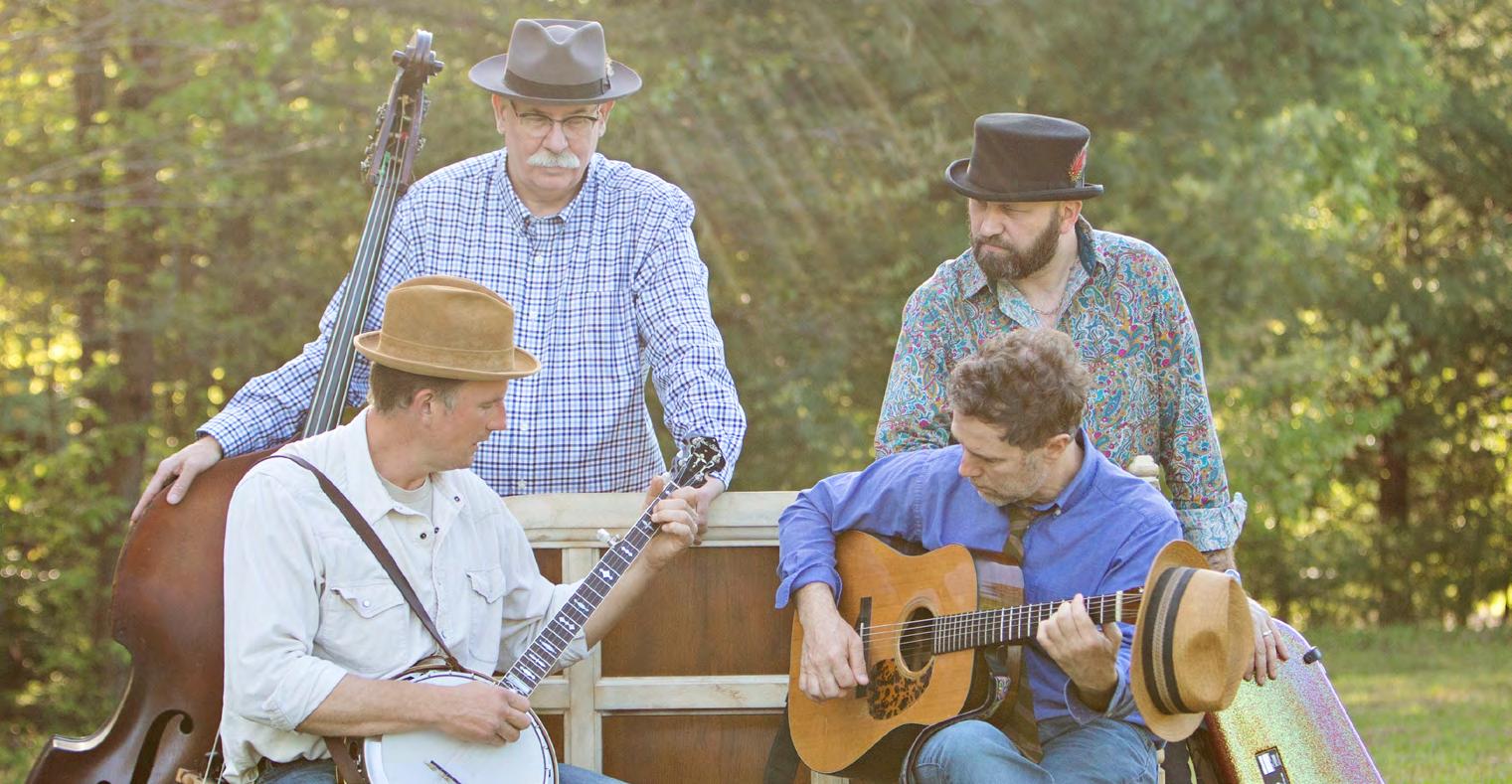
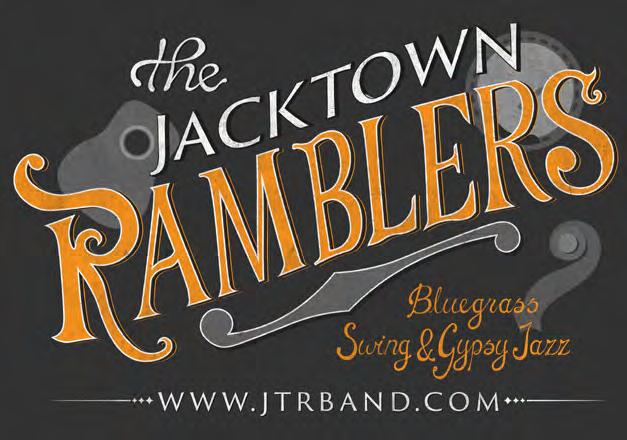
Wiseman said another thing they look forward to is the festivals booked for this spring. He specifically mentioned the SpringSkunk Music Fest, which happens May 11 through 14 in Greer, South Carolina. Wiseman said he likes it because it features “eclectic kinds of music.”
“I like playing at a festival that’s not just bluegrass,” he added.
Another thing he said he loves is the people involved with roots genres. For him, it’s not just about the music. There’s more to it.
“To me, with bluegrass… we jam together…we share information… it’s such a great community.”
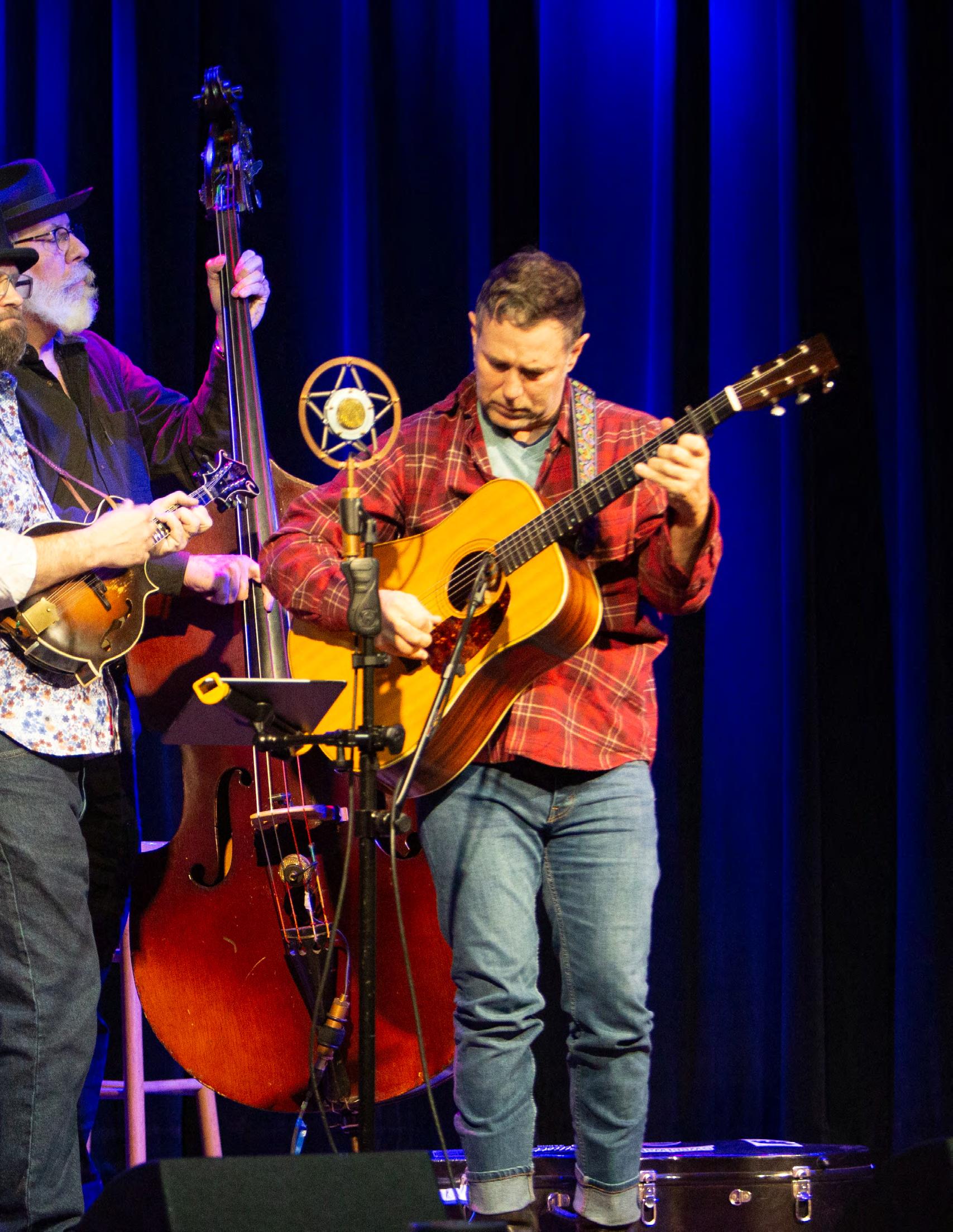
For Wiseman, the end goal is having fun; it’s what he feels sets the JackTown Ramblers apart. It’s not high-brow. They’re not afraid to joke at gigs and don’t take themselves too seriously. For instance, when he sees people he recognizes in the crowd, he takes a humble, selfdeprecating approach that surely gets a laugh.
“We always tease them and say, ‘your cable must be out again because you’re back here at a show.’”
In the end, the band’s philosophy is as simple as it can be.
“If we can have a good time,” Wiseman summarized, “hopefully they have a good time, too.”
The state of Colorado has a strong bluegrass scene, and a relatively new band, Jake Leg, is making a name for itself around the state. “We have a hugely supportive audience for bluegrass music here,” says band spokesperson Dylan McCarthy. The band, made up of seasoned, award-winning musicians who love playing bluegrass, formed in 2021 and quickly became one of Colorado’s leading contemporary bluegrass bands. “For me, this project has been a long time coming. I always wanted to make music together with these guys.”
“Jake leg” refers to paralysis caused by drinking improperly distilled or contaminated liquor. Dylan says that while no one in the band has suffered from such an affliction, they all liked the name. “When we were kicking around names for the band, we wanted something that wouldn’t pigeonhole us in any particular genre of music. We just think it’s a fun-sounding name.”

Dylan (mandolin, vocals) has played with most of the band members in different bands or jam sessions. Other members include Eric Wiggs (vocals, guitar), Justin Hoffenberg (fiddle), and Troy Robey (bass). “We are focused on original music and stylings,” explains Dylan, “but we want to




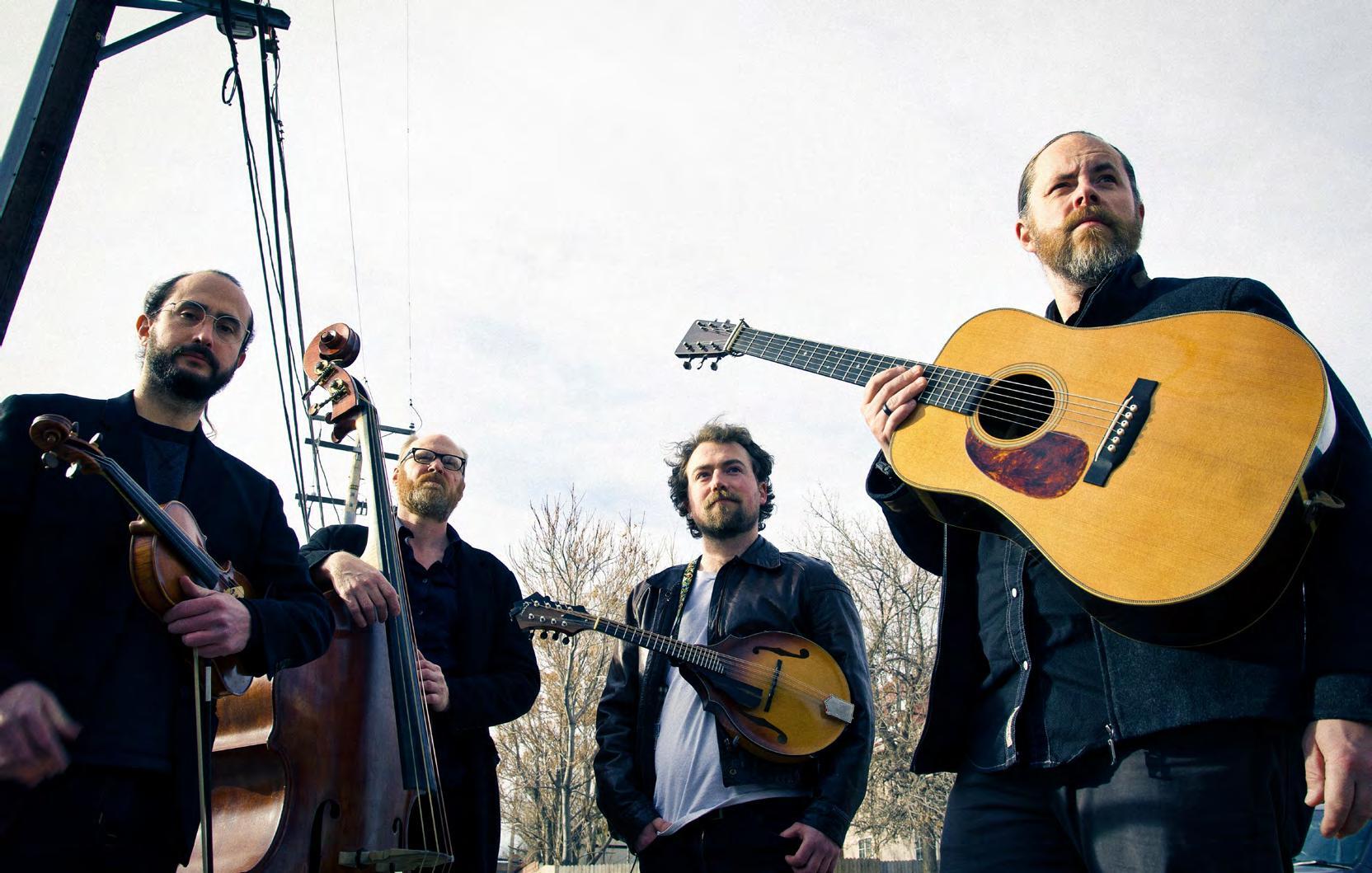

have music that is our own. We want to be identifiable as our own thing, but we don’t want to stray from the elements that make bluegrass so fun to play.”
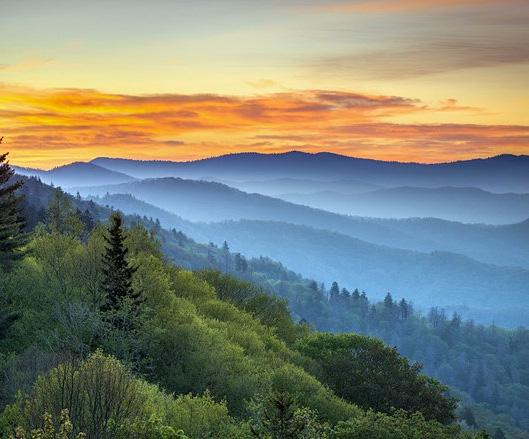
Jake Leg indeed focuses on delivering compelling original music, rich in storytelling, that brings each song to life. The entertainment value of their live shows is high, with exciting improvisation and a range of music that keeps the audience engaged until they play the last note.
As more festivals opened after the pandemic, Jake Leg has found itself on larger stages at bigger festivals. In 2022 they had an invitation from Planet Bluegrass to perform in the Wildflower Pavillion at Rockygrass in Lyons, Colorado. Last fall, IBMA invited them to be a showcase artist, which is where The Bluegrass Standard caught up with them.
Dylan was born and raised in Boulder. He was a natural musician, playing classical piano when he was only seven years old. Taking up guitar at ten, by age 13, Dylan was playing bass guitar with a rock band. He studied for two semesters at Berklee College of Music, where he picked up playing old-time and bluegrass music on the mandolin. He returned to Colorado and attended jams, where he learned from local players. In 2019, he became the Rockygrass Mandolin Champion.
Guitar player Eric Wiggs owns Vermillion Road Studio. He has collaborated with several other musicians and produced his own work. He won first place in the 2016 Rockygrass Flatpick Guitar Competition. Justin Hoffenberg and Troy Robey round out the four-piece group. Before the pandemic, all worked as full-time musicians. “Now we all teach, some more than others. Some teach live, and some via the internet.”
The band has released some singles, including “Tossing and Turning,” written by Dylan. “It’s the first song we worked on with this group,” he says. It’s become the flagship song of sorts for Jake Leg. “It’s a little bluesy, with a rock edge to it. I really like the spaced-out breakdown in part two. That tight package is what Jake Leg is all about.” The second single dropped is called “Jackie.”

The band will begin working with someone in March to prep for recording. “We are hoping to record an album this year,” Dylan says. The band is independent. “We haven’t signed with a label yet.”
The band has kept close to home, playing in the Colorado area in winter and spring, including the Midwinter Bluegrass Festival. “It’s a great picker festival,” says Dylan. The band’s schedule includes some out-of-state summer dates, so check their website, https://jakelegmusic.com, for locations near you.


Leftover Salmon has been a fixture of the Colorado music scene since they began offering their brand of progressive bluegrass over 30 years ago. By adding everything from drums and Cajun sounds to even funk and rock vibes, Leftover Salmon has always done their own thing from the beginning.
Vince Herman, the co-founder of Leftover Salmon, explained how the group’s unique sound came about. It started as a marriage of Cajun and bluegrass. Herman said he grew up in Suburban Pittsburgh, then moved to West Virginia, where he “got deeply into the bluegrass scene” before moving to Colorado, where he hoped to find a “more progressive” community. He knew Hot Rize hailed from Boulder, so he decided to give Boulder a try.
“I played in the Left Hand String Band a year or two, then a Cajun jug band kind of thing, the Salmon Heads,” he reminisced. “A couple of guys couldn’t make a gig, so I got members of Left Hand String Band to join in.”
That chance melding ended up being something immediately successful; Leftover Salmon was born.
“I thought it would be a one-off gig,” Herman said. “Then next thing you know, we had bookings for the next month.”
The band’s backstory explains why they create bluegrass sounds that are anything but traditional. Herman strove from the beginning to – as described on the band’s website – combine “Cajun, Calypso, Ska, and bluegrass into a coherent musical statement.”
While parts of the Leftover Salmon lineup have changed over the years, Herman has always been delighted to jam with members of the band.
“We’ve been really lucky to…as players come and go…to find some really great folks to play with,” he said.
After three decades of performances and music releases, Leftover Salmon is about to release its latest record, expected to be titled Grass Roots.
“It’s kind of a different record for us in that we didn’t write any of the songs,” Herman said, adding that there’ll be a rock vibe at times and even “a little funk.”
“It will release sometime in May,” he added.
Herman said the band looks forward to touring for the album, including going to Europe this year. He said he’s also hyped about this year’s Telluride Bluegrass Festival,

which sets a milestone this summer.
“Telluride is an important one for us,” Herman said. “I’m excited about the 50th Anniversary of Telluride.”
Herman seems to love the strength of the community, and he’s a vital part.
“I think folks in the mountains maybe have a different aesthetic, and somehow acoustic music seems to be a fit for the mountains and Colorado,” he said when asked how his region influences its music styles.
“The bluegrass scene is alive and well and thriving,” he added, mentioning a feature that impresses him.
“The RockyGrass Festival…their bluegrass academy has been growing young players and is phenomenal,” he said.
After so many years, is there anything Herman would like to do? Any “bucket list” items that Leftover Salmon has yet to accomplish?
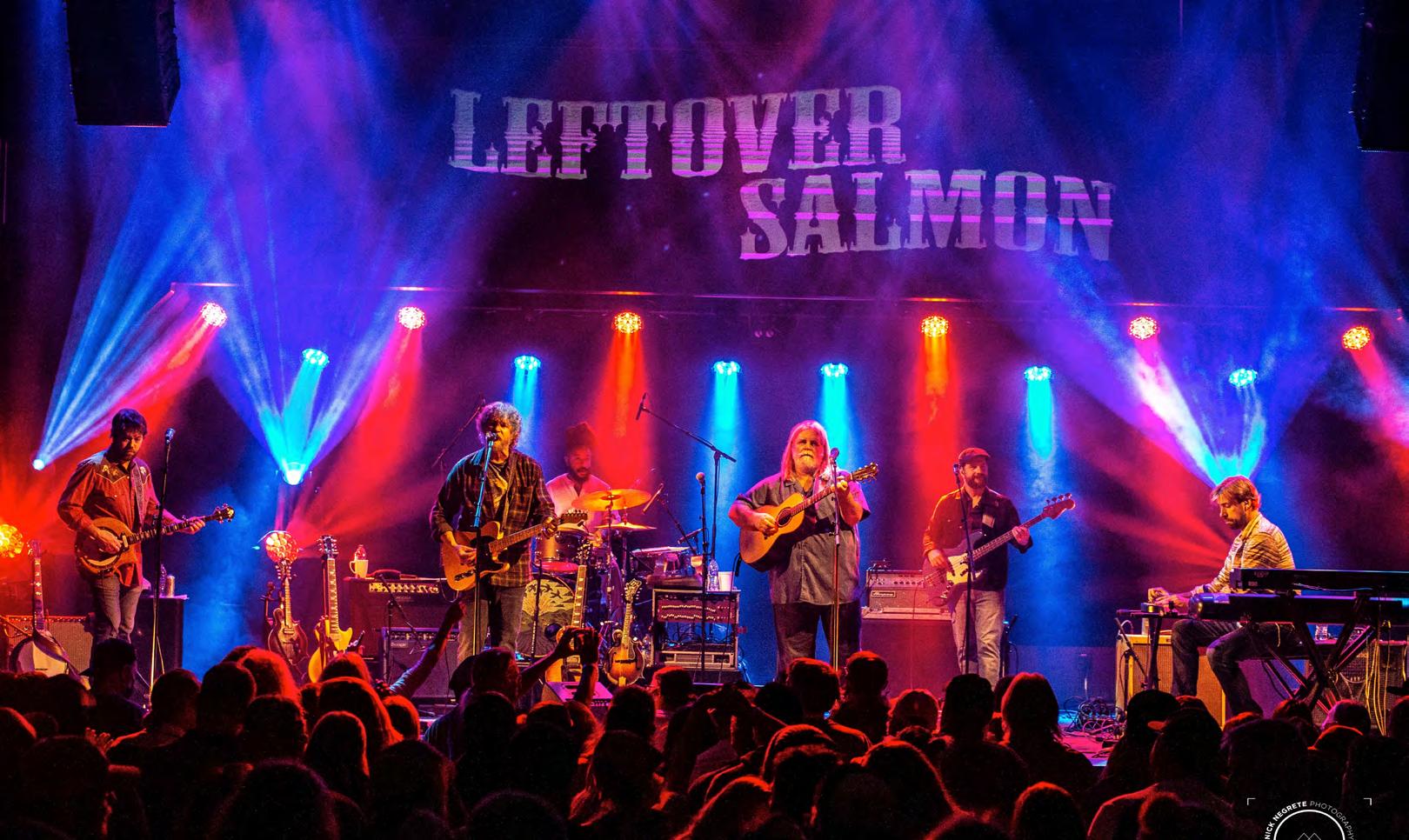
“We’d love to get to Australia,” he said. “And wouldn’t it be fun to have a Grammy? That’s certainly the gold standard.”
In the end, it sounds like the purpose is simply to make music that gets him excited.

“We feel really lucky to be doing this and still having fun,” he said. “We feel lucky as can be.” And he feels pretty content about where the band is. “I think we know how to have a good time.”

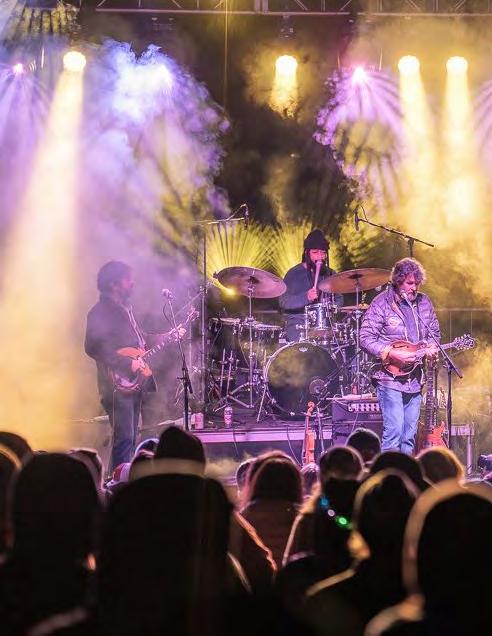



New York City and Chicago have their pizza. Philadelphia has its cheesesteaks. And Boston has its cream pie.
Moving into Appalachia, the Carolinas have their respective versions of BBQ. And you’ll find yourself in hot chicken territory in Nashville, Tennessee.
But one Appalachian state has a regional food that is a bit more underground—literally. West Virginia’s pepperoni roll, a soft bun enveloping slices or sticks of pepperoni and baked golden brown, is found in every corner of the Mountain State.
The pepperoni roll, which can also include cheese, peppers, or sauce, draws on the coal mining heritage of the state. Not only was it created by the coal mining community, but it also continues to be consumed by coal miners.
When coal miners - many of them of Italian heritagewere lowered hundreds of feet underground, they would often fill their lunch buckets with bread, sticks of salami, and water to sustain them during their long shifts.
Sometime between 1927 and 1938, baker Giuseppe Argiro, who emigrated from Calabria, Italy, to work in the coal mines, thought to combine the two foods into one delicious snack after drawing on his previous experience underground. The pepperoni roll transformed the lunch experience by offering a portable, handheld lunch, allowing miners to eat with one hand, drink water with the other, and return to work quickly.
Today, Argirgo is most commonly credited with commercializing the pepperoni. However, coal miners’ wives likely crafted the very first pepperoni rolls in their home kitchens—years and years before commercial kitchens began selling them.
The original pepperoni rolls were created from a harder Italian bread and hand-cut pepperoni strips from giant blocks. Over time, the pepperoni roll evolved to include a softer white bread dough and various forms of pepperoni, like slices, ground, or a mixture of the two. Then, cheese was added to the roll. The most common
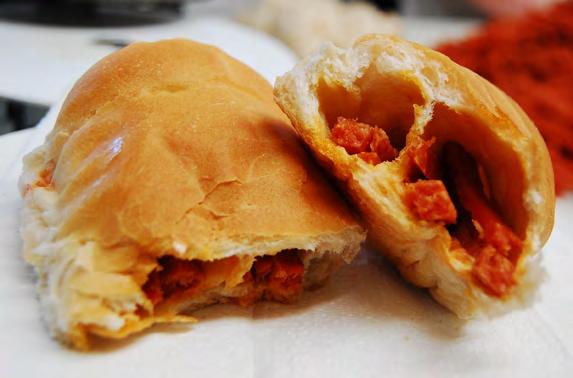
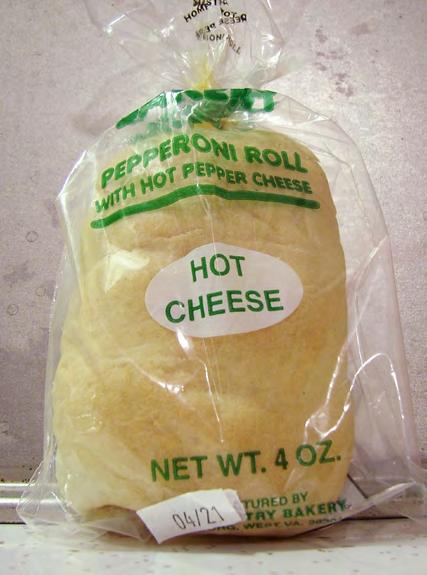
types are American, mozzarella, and hot pepper cheese.
Many additional versions of the pepperoni roll exist - from adding ramps, a garlicky onion that grows wild in the spring, and peppers to the sauce. There’s also chili, marinara, jalapeños, banana peppers, mushrooms, olives, and more.
For vegetarians, there are pepperoni rolls made with a plant-based meat substitute. Vegans can opt for that same plant-based meat substitute and opt for a nut cheese, as well. And for the gluten-free, select bakeries offer a pepperoni roll made with a gluten-free roll.
Not only does the pepperoni roll vary in ingredients, but it can also come in various sizes. The most common is the snack size, which is about five to six inches long. However, there are bite-size pepperoni rolls often served as appetizers. And there are large pepperoni rolls that are split down the middle, covered in toppings, and baked once again, fit for an entire meal.
They can be found everywhere, from bakeries and grocery stores to convenience stores and gas stations - and everywhere in between. They are at tailgates for college football games and hors d’oeuvres at weddings. They are a must-have for hiking trips and a go-to for road trips.
Many of the reasons the pepperoni roll rose to popularity in the mining community are


the same reasons it continues to be a cultural touchstone today. Because it is portable and shelf stable, the pepperoni roll has found itself in all locations and all events. There are even celebrations created in its honor.
Fairmont, West Virginia, the birthplace of the pepperoni roll, hosts the Three Rivers Festival every Memorial Day weekend. During the three-day event, there are pepperoni roll bakeoffs, a pepperoni roll eating contest, and more.
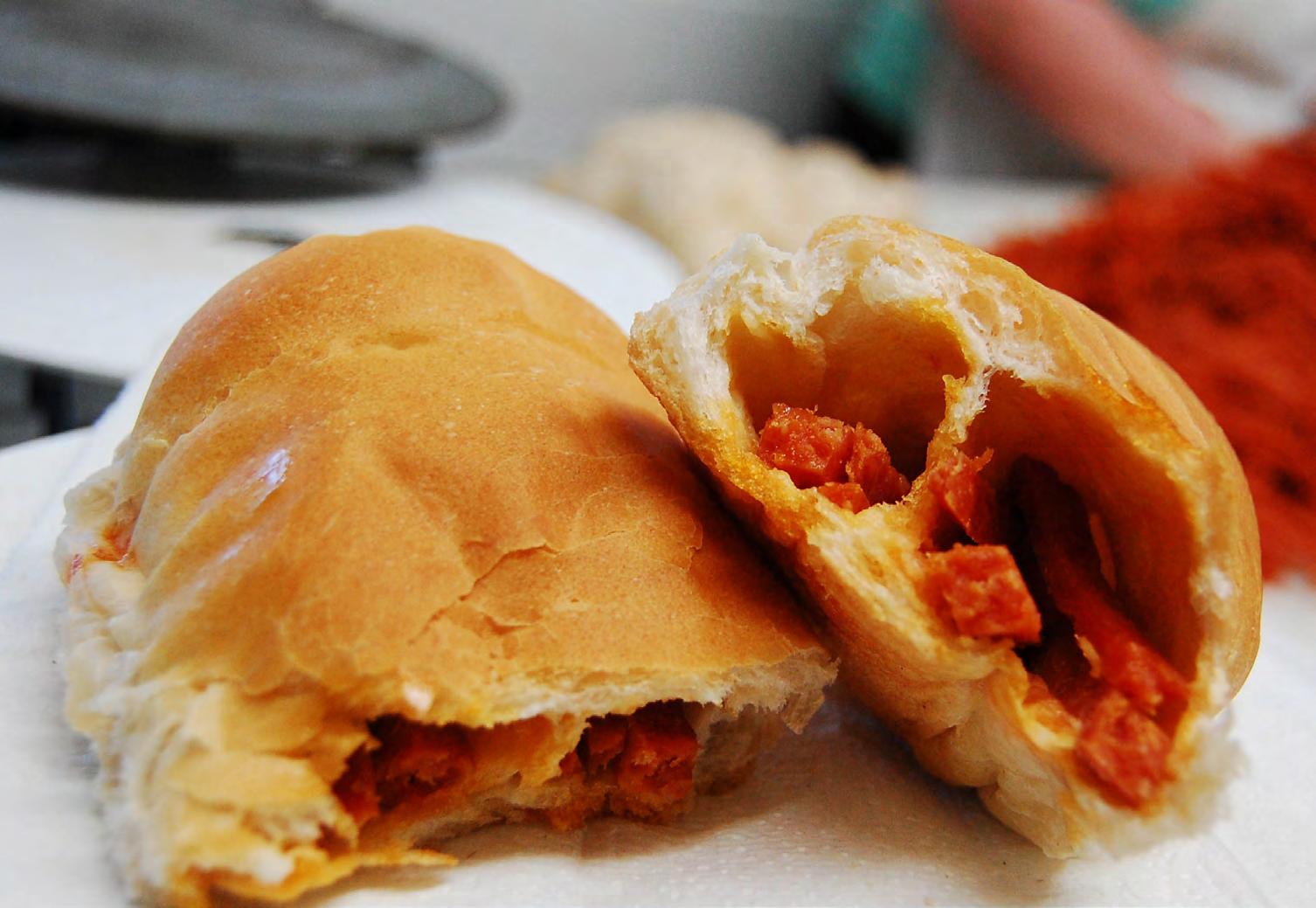
In Mannington, West Virginia, the community rings in the new year with a pepperoni roll drop at midnight. This particular pepperoni roll isn’t edible; it is crafted from plastic, paint, and over 100 feet of LED lights.

Because of the pepperoni roll’s place in Appalachian culture and its impact on the communities within West Virginia, the local legislature has even introduced bills recognizing it as the state’s official food. While those have not yet passed, the pepperoni remains West Virginia’s unofficial state food, beloved by those near and far. But, try one for yourself the next time you find yourself within the borders of West Virginia and enjoy not just a tasty snack but also a piece of the state’s history.
*Note: Candace Nelson is the author of “The West Virginia Pepperoni Roll,” a book documenting the history and impact of the regional food of the Mountain State, published by West Virginia University Press. Learn more at https://wvupressonline.com/node/667.



Author: Taylor Hagood
Publisher: the University of Illinois Press
Publisher Website: www.press.uillinois.edu

Publication Date: 5/23/23
An advance copy of Taylor Hagood’s, Stringbean: The Life and Murder of a Country Music Legend was forwarded to me for review for this magazine. I’ve had a lot of enjoyable (and some not-so-enjoyable) things forwarded to me, but I think this is the one I have enjoyed most. Already a David (Stringbean) Akeman fan, and even mourning his death by murder as a fifteen-year-old Hee Haw fan in 1973, Hagood helps me fill so many voids in a very incomplete mental picture.
The name of the book is Stringbean. David Akeman’s stage name, and nickname in real life, was Stringbean. Just like the book, just like Akeman, I use them all interchangeably.
Stringbean goes from an in-depth biography of Akeman and Grand Ole Opry history to a near play-by-play recap of the police investigation and murder trials of John A. Brown Jr. and Douglas Brown, brothers convicted in the murders of Akeman and his wife, Estelle, in a botched robbery at their home in 1973. This scholarly work varies in tone and readability, from fascinating biography and history to detective novels. Pulling off such enjoyability in a scholarly work is remarkable. Well done, Taylor Hagood. I could not put the book down once I started. The typeface was a bit small for me, but that is more of a comment about my eyesight than the book. I could have used a point or two larger font.
Not only does Hagood give us a detailed look at the life of Stringbean, but a serious lesson in country music history since Stringbean and early Nashville country music are closely entwined. The fans of Bluegrass and early country music will get an enjoyable lesson about the people who shaped country music and Bluegrass (then called country music, too). The Grand Ole Opry, the ever-morphing and growing Nashville, the near-death of old country music, Bluegrass, and Folk during the unstoppable onslaught of Rock and Roll, and its continued relevance today are all well covered here. Akeman’s contributions to country music are not overlooked but deservedly lauded. Regardless of when and which Bill Monroe band member may have contributed to that original Bluegrass sound, Stringbean was the first banjo player in The Bluegrass Boys. Hagood shows us what we always suspected: Stringbean was always Stringbean, a great musician and entertainer.
Particularly interesting to me was learning of the close friendship of Stringbean and Estelle with Grandpa Jones and his wife, Ramona. Not only were they close friends, but they fished together, hunted together, were close neighbors, Opry stars, and were both famous and toured the county together ...they were inseparable. Grandpa Jones discovered their lifeless bodies the morning after their murder. I had known this before, lost it in my memory. Now, it is cemented in my mind, and I will never forget it. Imagine the heartbreak of Grandpa Jones to find his closest friends that way.
Since this is an advance copy, I am cautioned not to use any quotations from the book. This is tough because there are dozens of good quotes in it. Not being able to use quotes, I must resort to a paraphrase or two. Perhaps I already have. While I appreciate getting advance copies, I do not like this restriction. I think it’s because there may yet be some editing to be done before the final publication.
While the book reads like a suspense novel, at times, the “might have,” “could have,” and “may have” sentences get a bit tedious. Even in a life as well documented as Akeman’s, there are gaps. Any biographer has to insert himself into the gaps for which there is no solid information. Any biographer has to speculate at times, but even then, Hagood’s speculations all have some evidence that leads him to them. In a few chapters, there are a lot. There seemed to be some speculations in the murder trial, too. Hagood reveals that there was a lot of hearsay evidence in the high-profile trial. Nashville abhorred the Akeman murders. An investigation taking over a year before arrests were made, and Nashville royalty demanded justice was a sore spot to Akeman’s friends. With cocaine-snorting lawyers dealing with their own personal baggage tarnishing the court proceedings, and the next thing you know, you’re seeing all the trappings of a John Grisham novel that happened in real-time in district court in Davidson County, Tennessee, in 1974. It is a fascinating story told well in this book.
Throughout the investigation and trial phases of the book, Hagood introduces characters as fast and furiously as a William Faulkner novel. Unlike Faulkner, Hagood’s not making them up since they were real people with very real roles. If you are a Faulkner fan, you already know that keeping notes on what name goes with who is speaking is helpful. I didn’t mind this at all. Some will likely go through this part confused, much as I did when I stumbled along in my first William Faulkner experience. You will be better for having done it.

I particularly enjoyed Hagood’s peek into Stringbean’s forays into the Folk music world and its embrace of him, which was financially beneficial at a time when country music was starving. So many in the Folk scene approach music like Stringbean’s from an educational and pedantic position. They had a sincere appreciation for the authenticity and honesty they studied and strived to duplicate.
If this book has a theme, it might be that David Akeman was Stringbean, and Stringbean was David Akeman. The show business image on the stage of The Grand Ole Opry was as real as the man sitting in a chair in front of the fireplace, smoking his pipe, and frailing a tune on his Vega No. 9 banjo in his tiny cabin home.
Get your orders in! You will like this book. Thanks, Taylor Hagood, for filling in so many blanks for me, even those you filled in from your remote closeness to the gentle and genuine spirit of Stringbean.
Stringbean is still a vital part of our music. Stringbean shows us that.
~Mississippi Chris Sharp

